Technologies
I Took the iPhone 15 Pro Max and 13 Pro Max to Yosemite for a Camera Test
Do the latest Apple phone and cameras capture the epic majesty of Yosemite National Park better than a two-year-old iPhone? We find out.
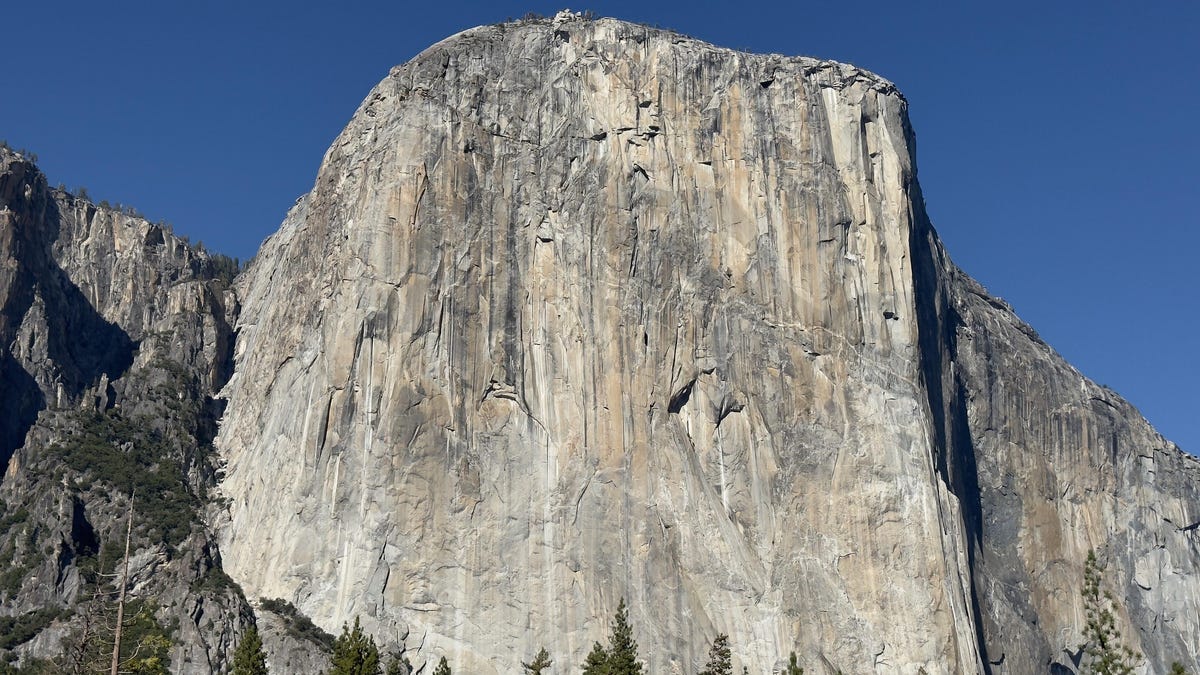
This past week, I took Apple’s new iPhone 15 Pro Max on an epic adventure to California’s Yosemite National Park.
As a professional photographer, I take tens of thousands of photos every year. Much of my work is done inside my San Francisco photo studio, but I also spend a considerable amount of time shooting on location. I still use a DSLR, but my iPhone 13 Pro is never far from me.
Like most people nowadays, I don’t upgrade my phone every year or even two. Phones have reached a point where they are good at performing daily tasks for three or four years. And most phone cameras are sufficient for capturing everyday special moments to post on social media or share with friends.
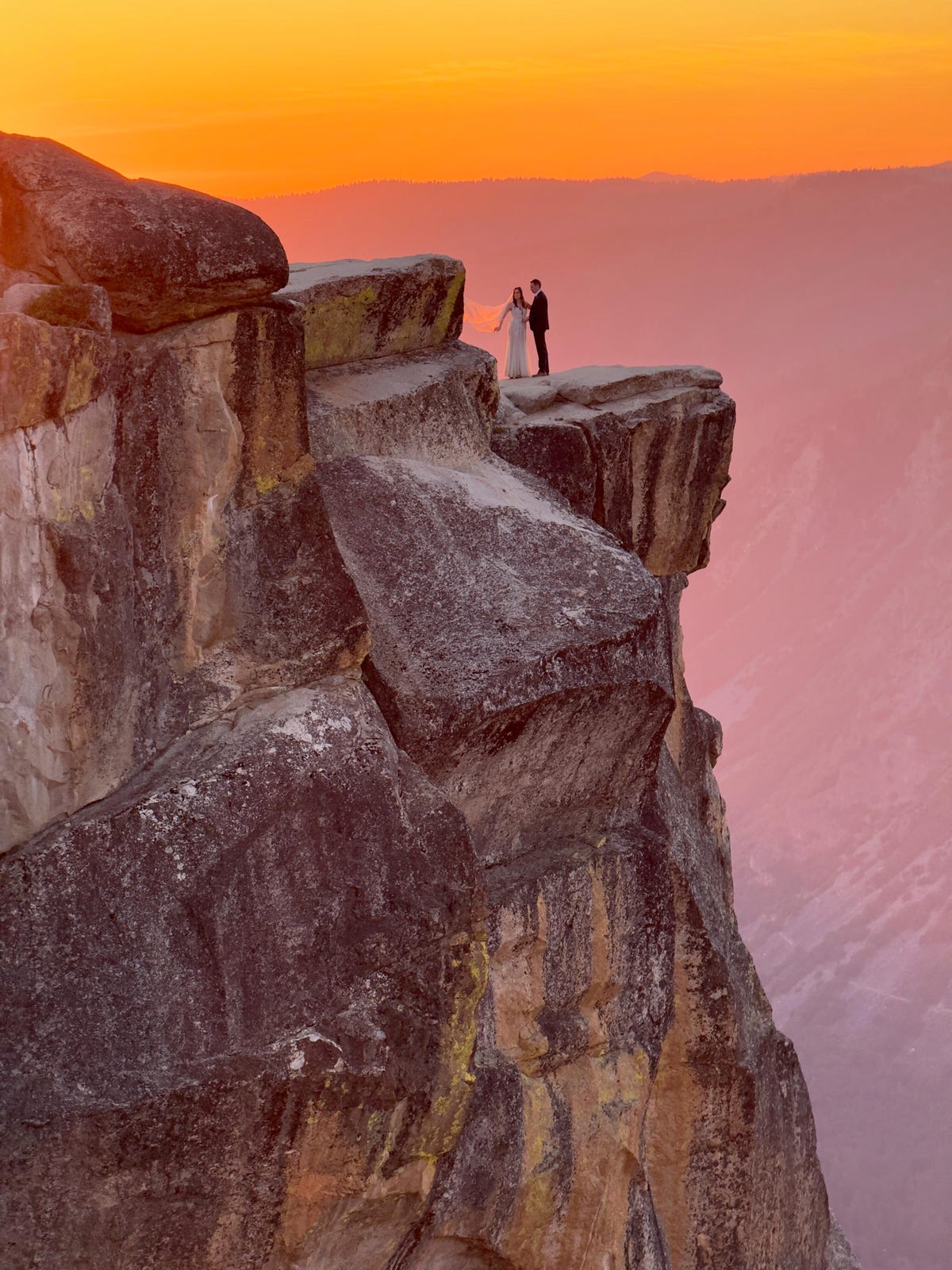
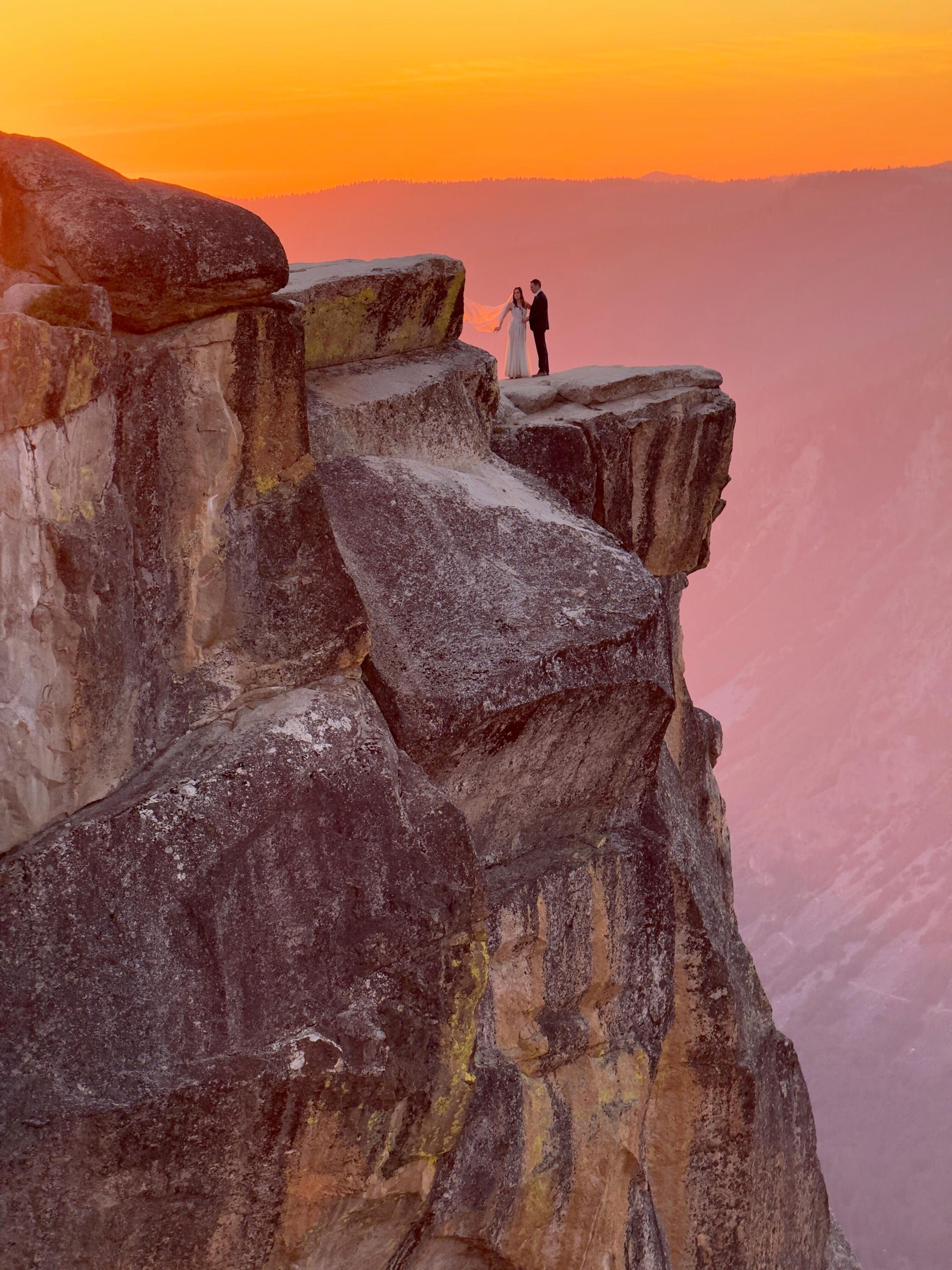
But maybe, like me, you’re in the mood for something shiny and new like the iPhone 15 Pro Max. I wanted to find out how my 2-year-old iPhone 13 Pro and its 3x optical zoom would do against the 15 Pro Max and its new 5x optical zoom. And what better place to take them than on an epic adventure to Yosemite, one of the crown jewels of America’s National Park System and an iconic destination for outdoor lovers.
Yosemite is absolutely, massively impressive.

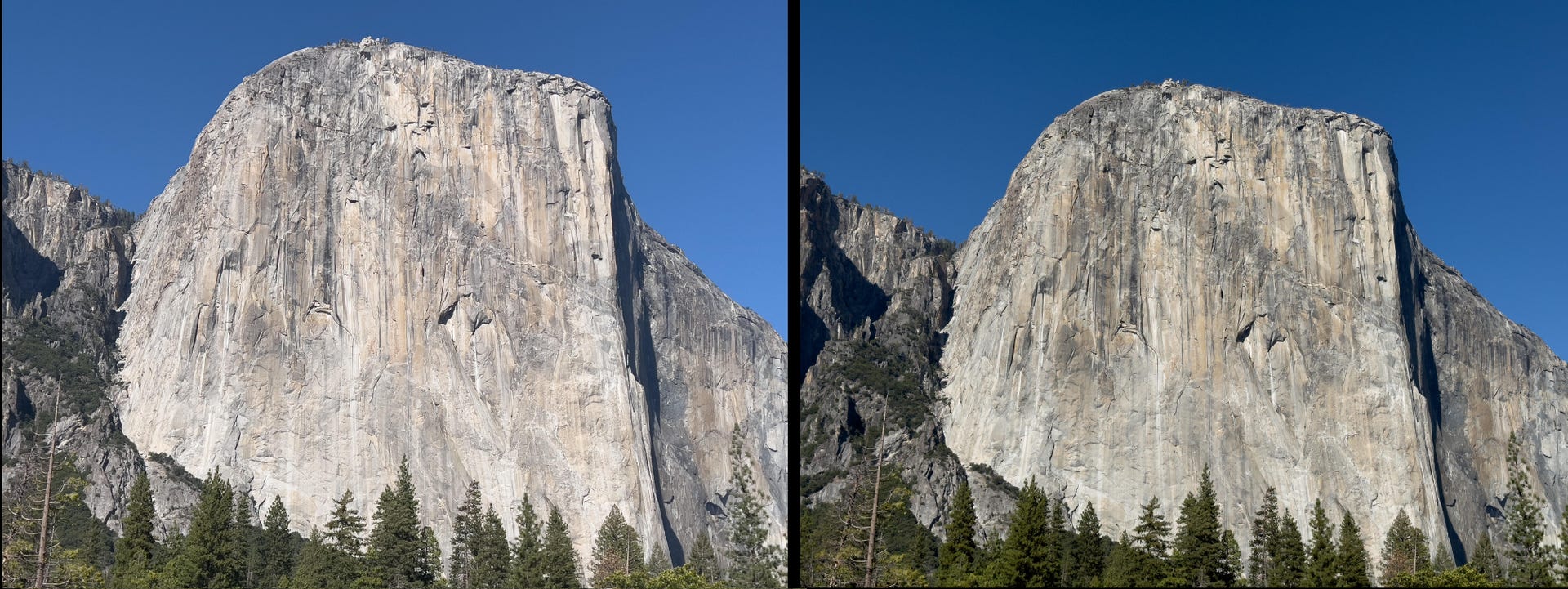
The main camera is still the best camera
The iPhone 15 Pro Max’s main camera with its wide angle lens is the most important camera on the phone. It has a new larger 48-megapixel sensor that had no problem being my daily workhorse for a week.
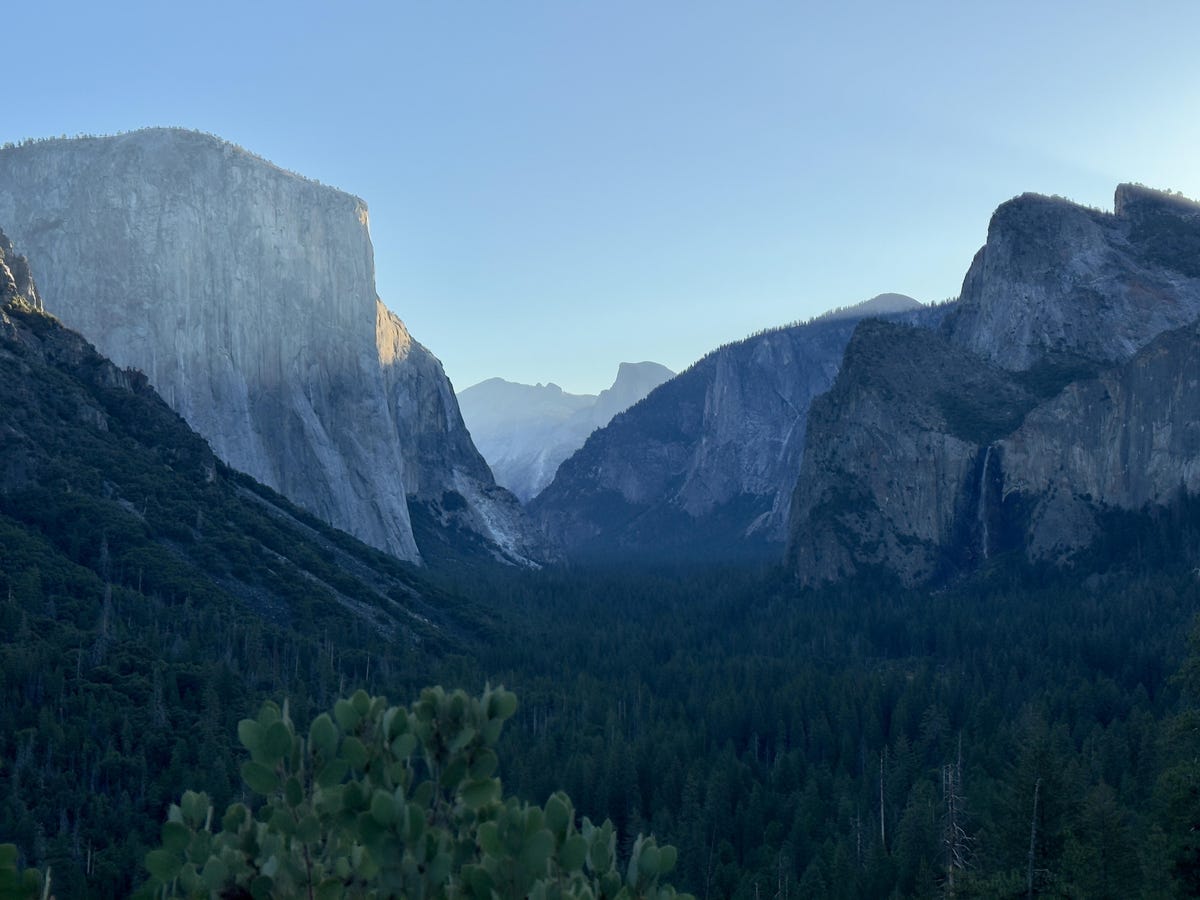
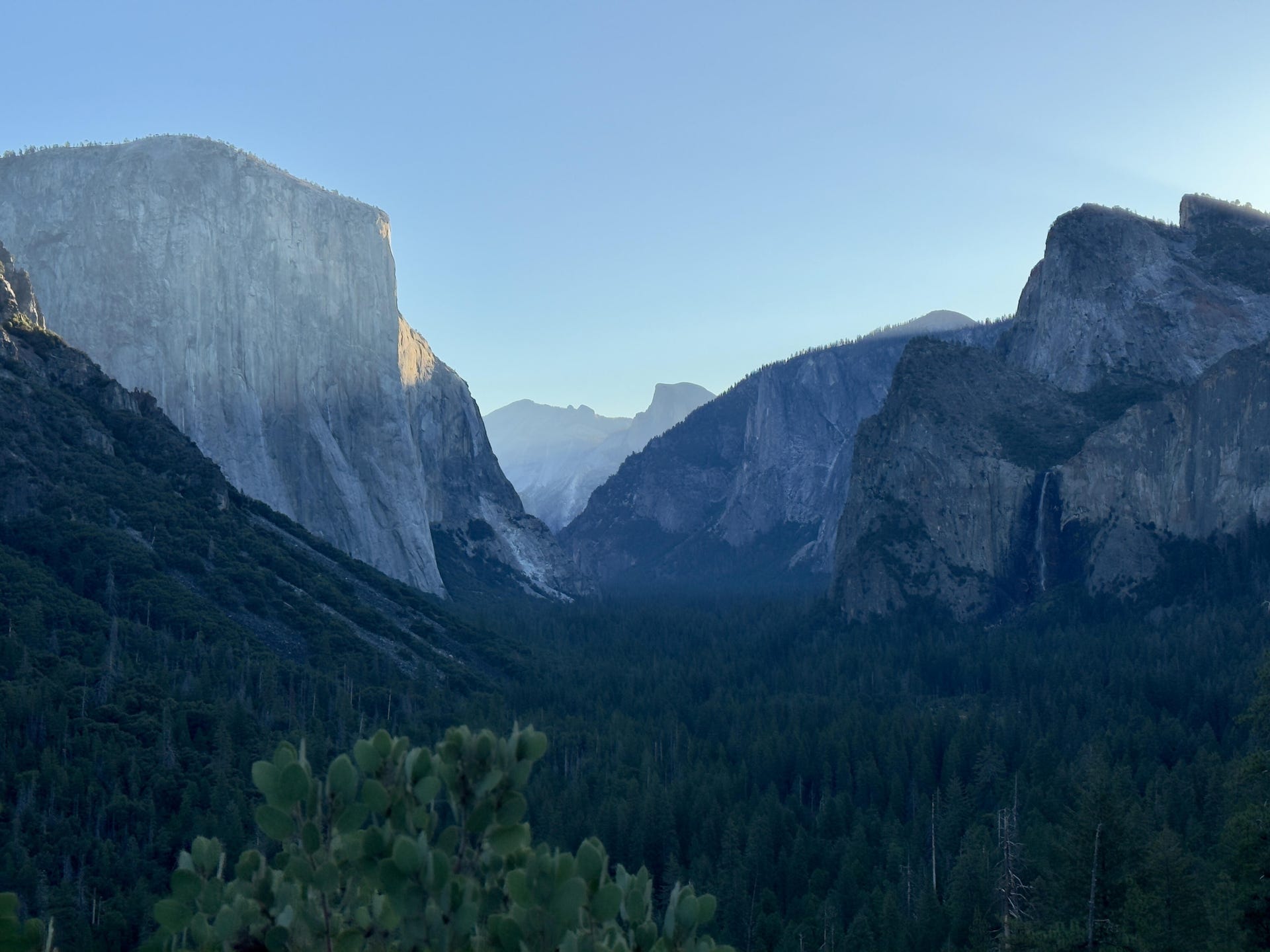
The larger sensor means the camera can now capture more light and render colors more accurately. And the improvements are visible. Not only do photos look richer in bright light but also in low-light scenarios.
In the images below, taken at sunrise at Tunnel View in Yosemite National Park, notice how the 15 Pro Max’s photo has better fidelity, color and contrast in the foreground leaves. Compare that against the pronounced edge sharpening of the mountaintops in the 13 Pro image.
The 15 Pro Max’s camera captures excellent detail in bright light, including more texture, like in rocky landscapes, more detail in the trees and more fine-grained color.
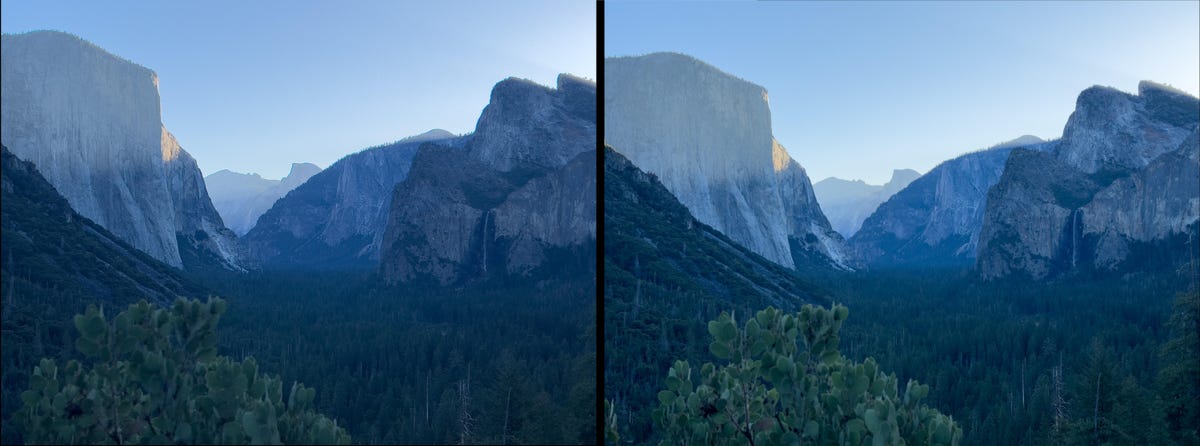
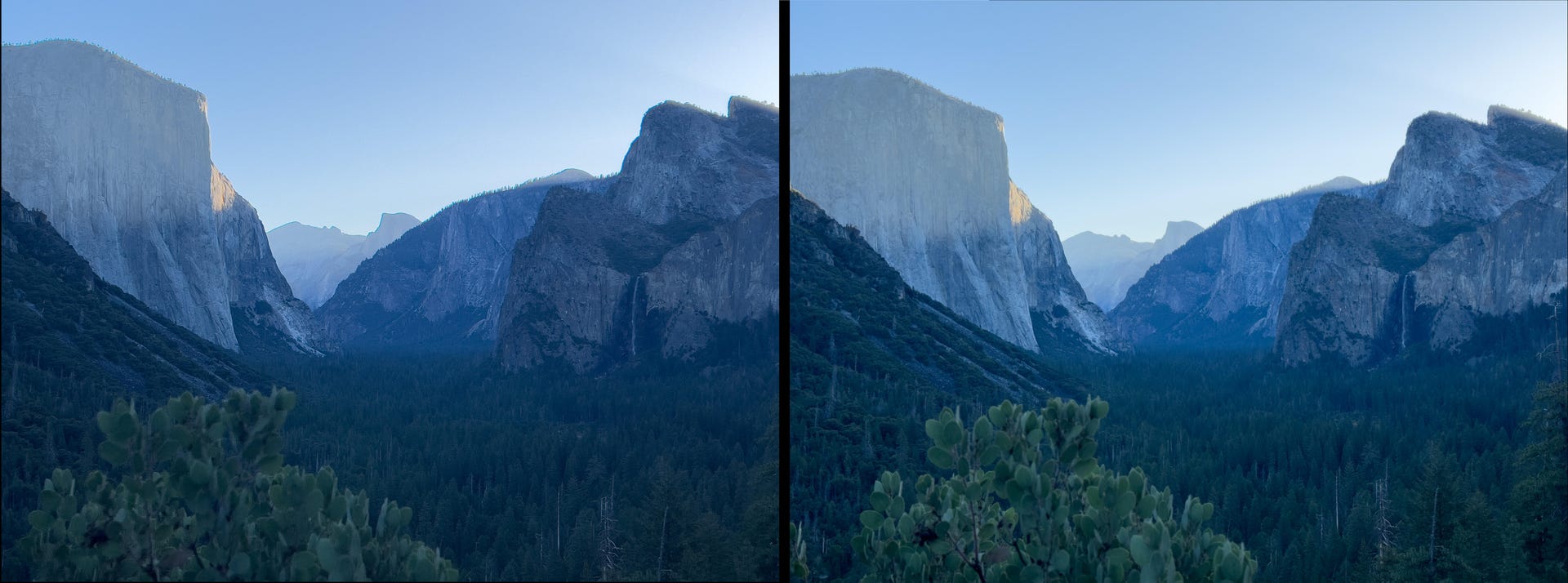
A new 15 Pro Max feature aimed at satisfying a camera nerd’s creative itch uses the larger main sensor combined with the A17 Pro chip to turn the 24mm equivalent wide angle lens into essentially four lenses. You can switch the main camera between 1x, 1.2x, 1.5x and 2x, the equivalent of 24mm, 28mm, 35mm and 50mm prime lens – four of the most popular prime lens lengths. In reality, the 15 Pro Max takes crops of the sensor and using some clever processing to correct lens distortion.
In use, it’s nice to have these crop options, but for most people they will likely be of little interest.


I find the 15 Pro Max’s native 1x view a little wide and enjoy being able to change it to default to 1.5x magnification. I went into Settings, tapped on Camera, then on Main Camera and changed the default lens to a 35mm look. Now, every time I open the camera, it’s at 1.5x and I can just focus on framing and taking the photo instead of zooming in.
Another nifty change that I highly recommend is to customize the Action button so that it opens the camera when you long press it. The Action button replaces the switch to mute/silence your phone that has been on every iPhone since the original. You can program the Action button to trigger a handful of features or shortcuts by going into the Settings app and tapping Action button. Once you open the camera, the Action button can double as a physical camera shutter button.
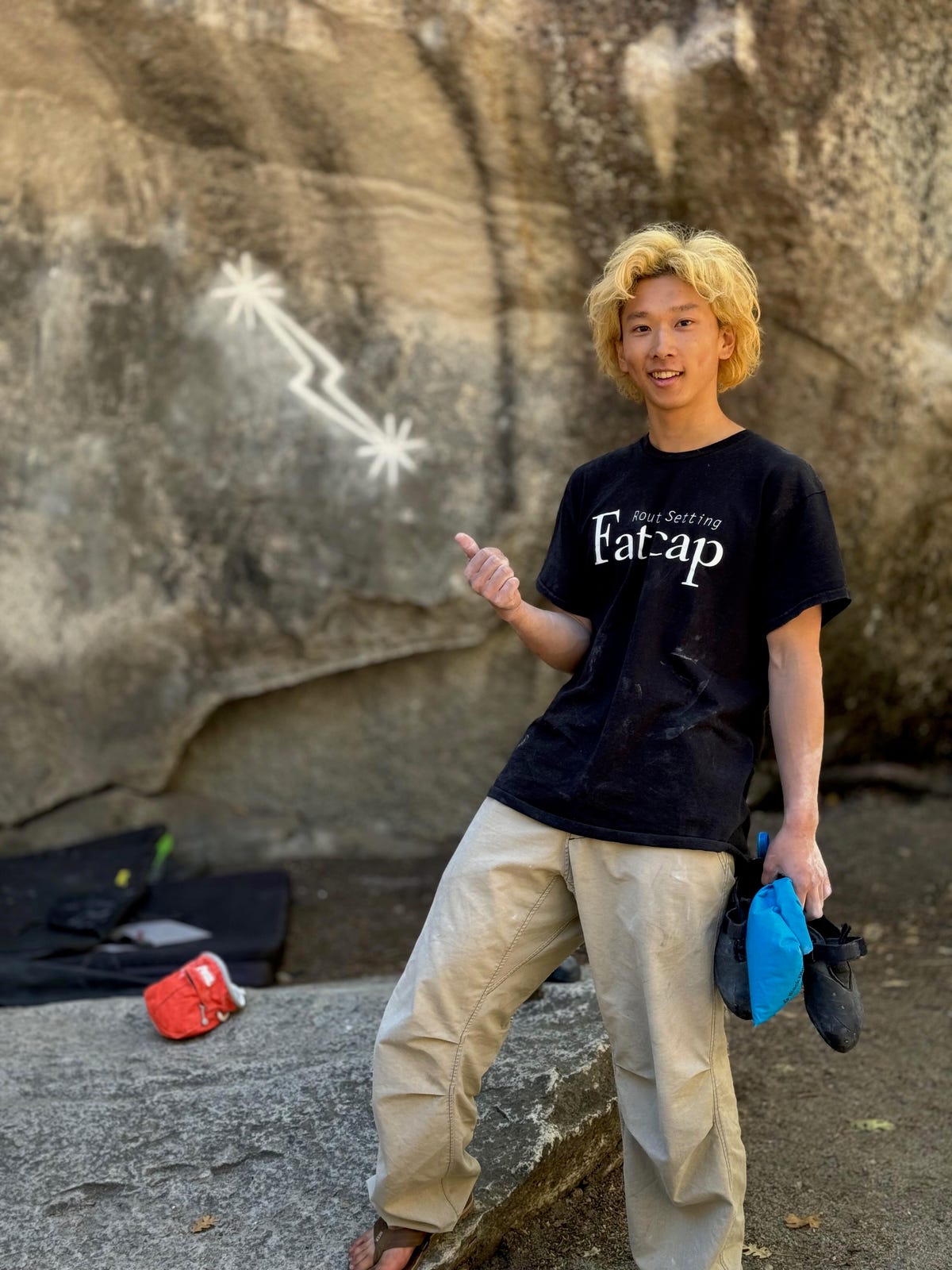
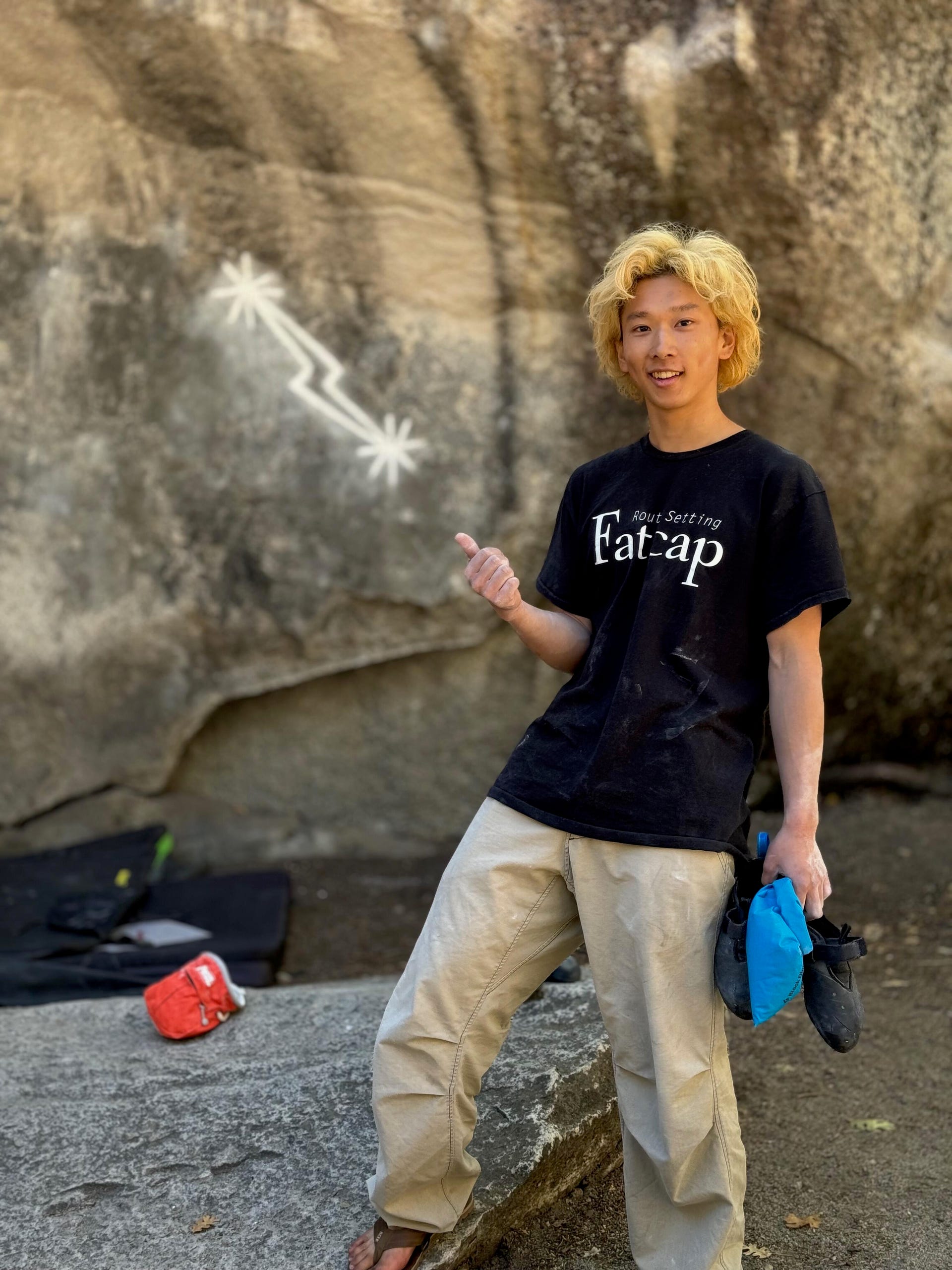
The dynamic range and detail are noticeably better in photos I took with the 15 Pro Max main camera in just about every lighting condition.
There are fewer blown out highlights and nicer, blacker blacks with less noise. In particular, there is more tonal range and detail in the whites. I noticed this particularly when it came to how the 15 Pro Max captured direct sunlight on climbers or in the shadow detail in the rock formations.
Read more: iPhone 15 Pro Max Camera vs. Galaxy S23 Ultra: Smartphone Shootout
Overall, the 15 Pro Max’s main camera is simply far better and consistent at exposures than on the 13 Pro.
The iPhone 15 Pro Max 5x telephoto camera
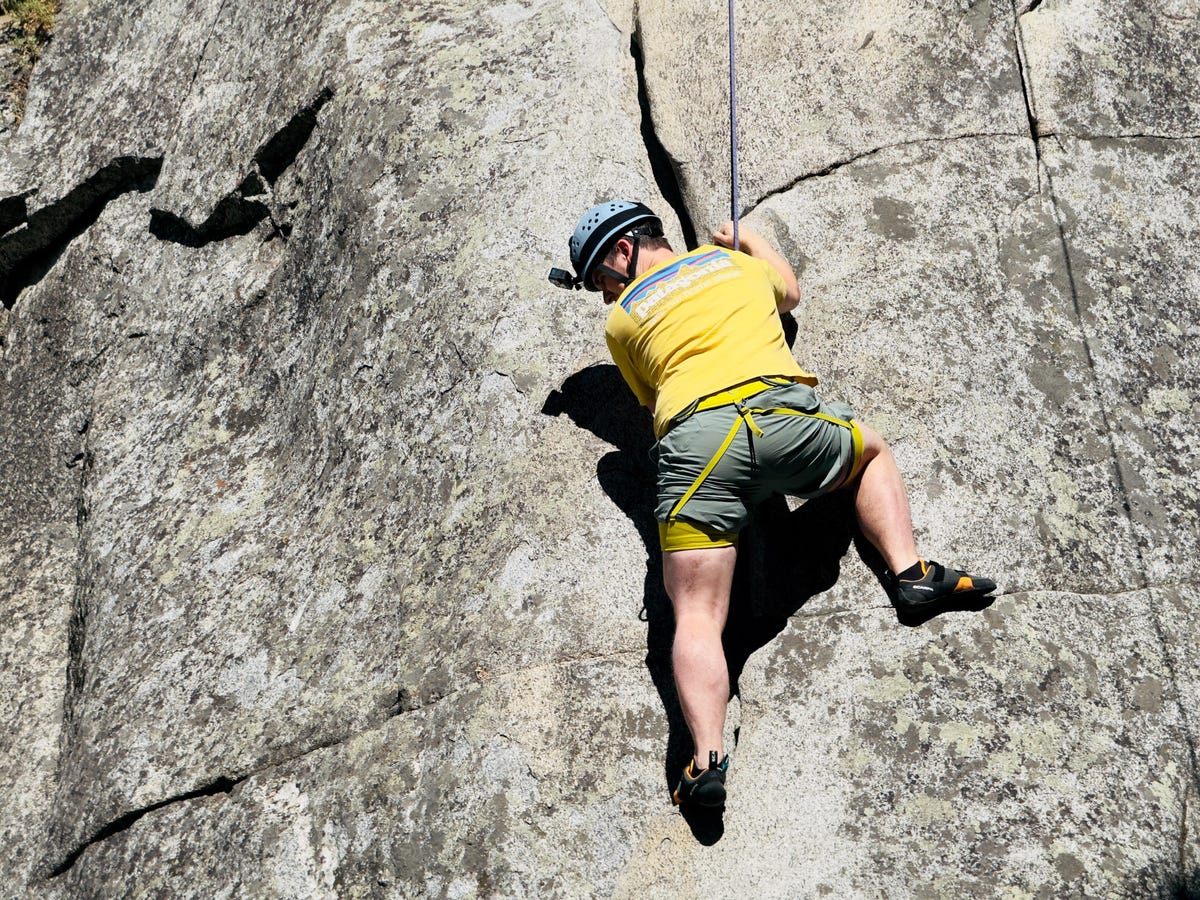
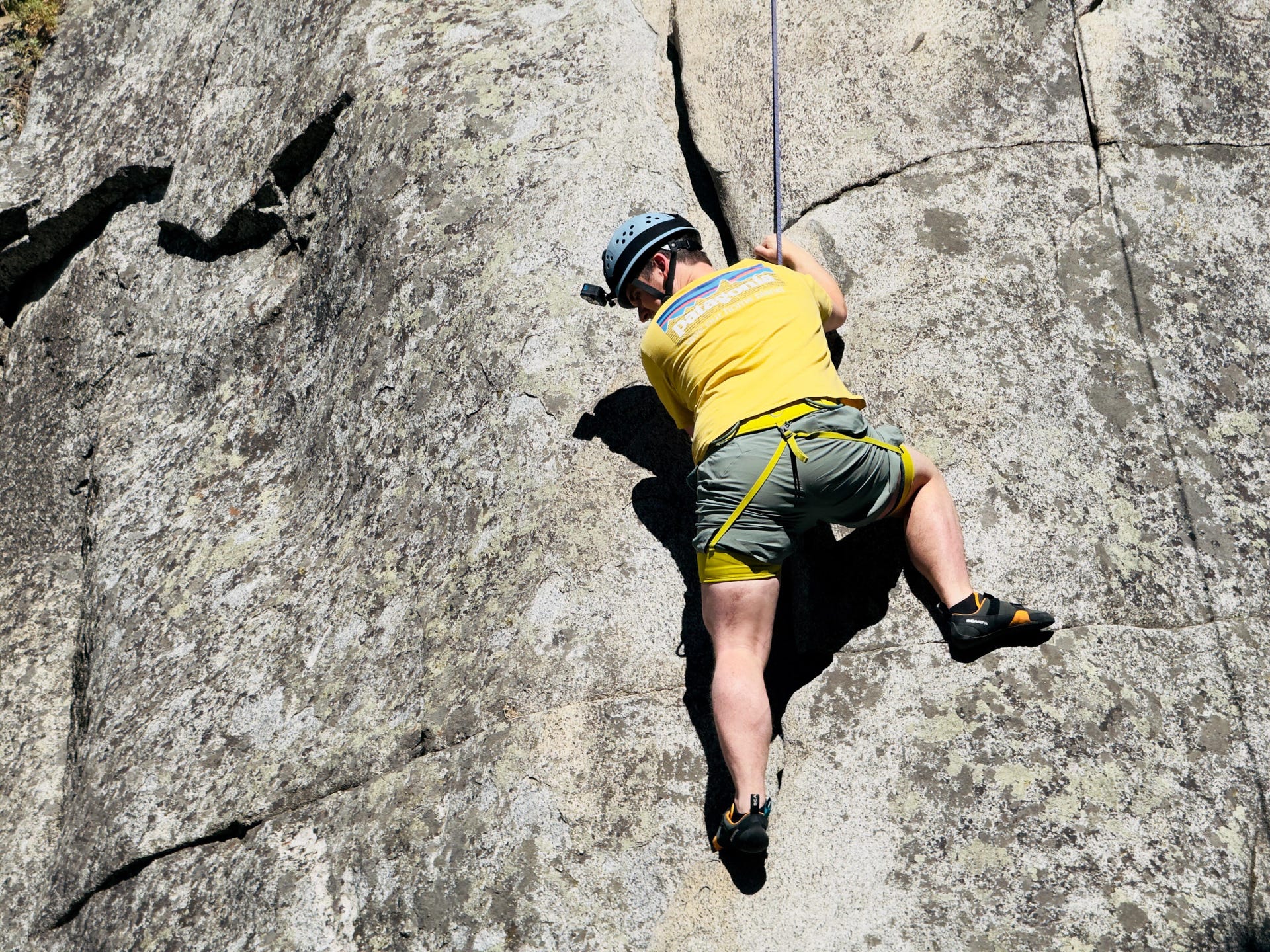
The iPhone 15 Pro Max has a 5x telephoto camera with an f/2.8 aperture and an equivalent focal length of 120mm.
The 13 Pro’s 3x camera, introduced in 2021, was a huge step up from previous models and still gives zoomed-in images a cinematic feel from the lens’ depth compression. The 15 Pro Max’s longer telephoto lens, combined with a larger sensor, accentuates those cinematic qualities even further, resulting in images with a rich array of color and a wider tonal range.
All this translates to a huge improvement in light capture and a noticeable step up in image quality for the iPhone’s zoom lens.
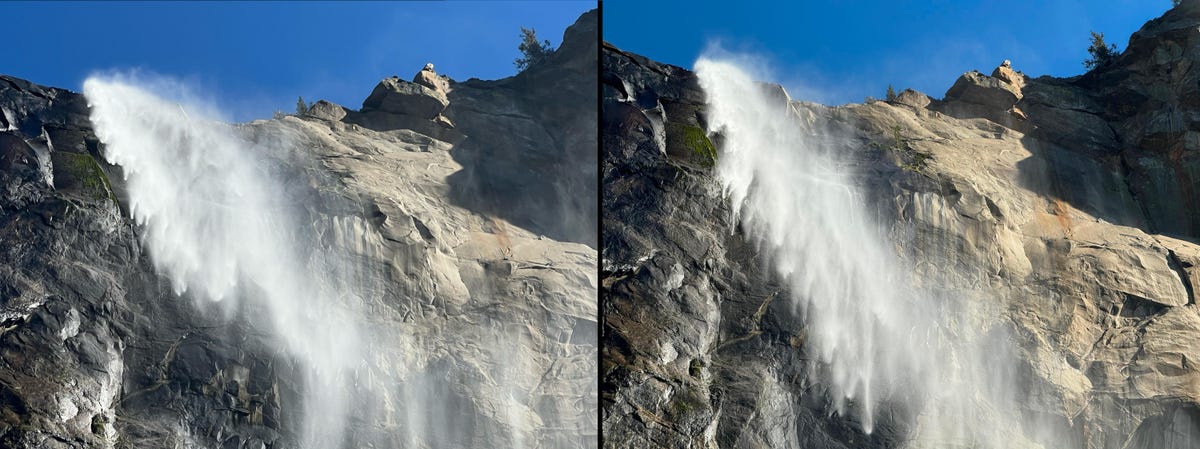
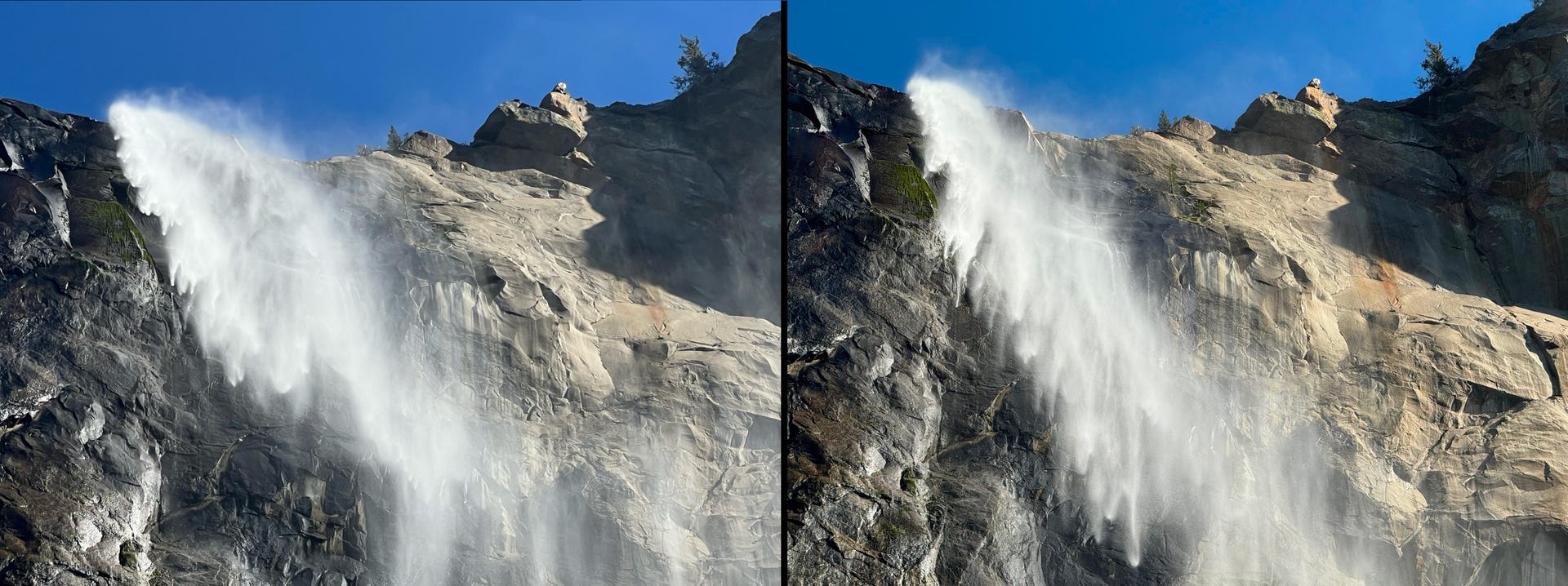
I found that the 15 Pro Max’s telephoto camera yields better photos of subjects farther away like mountains, wildlife and the stage at a live concert.
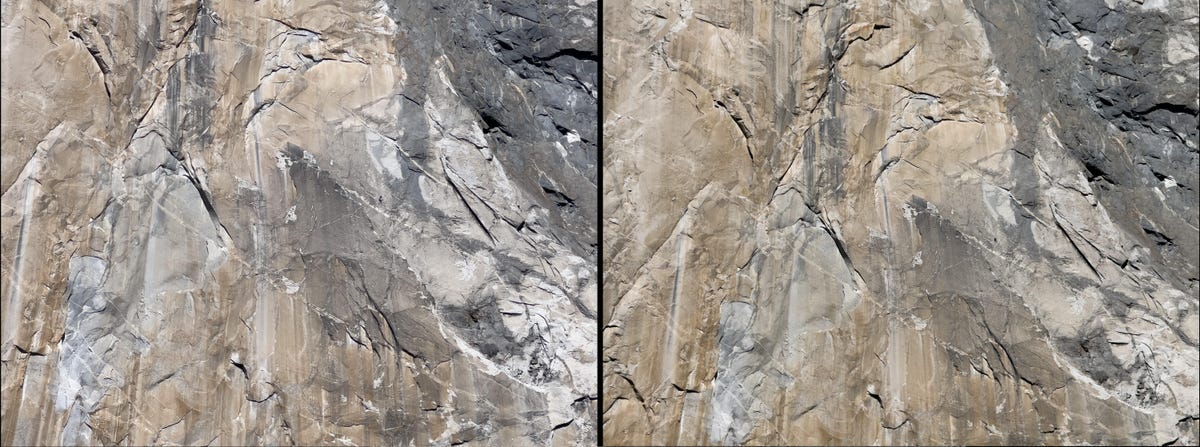
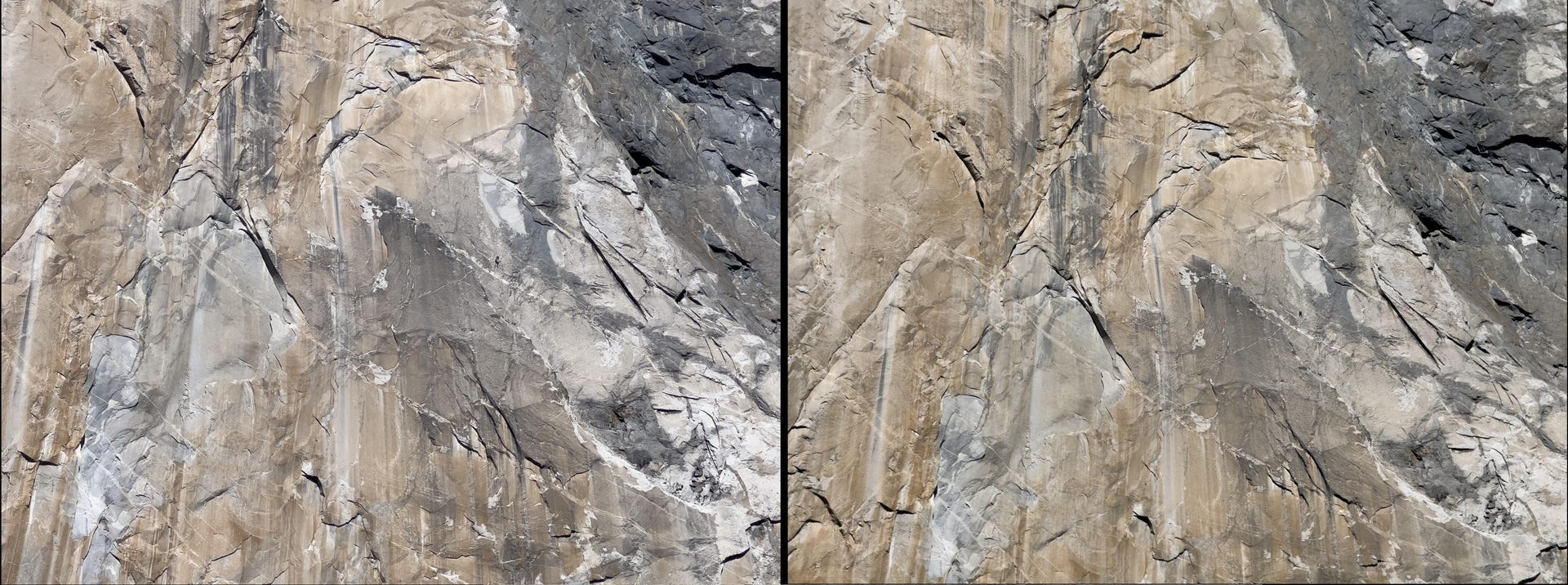
A combination of optical stabilization and 3D sensor-shift make the 15 Pro Max’s tele upgrade experience easier to use by steadying the image capture. A longer lens typically means there’s a greater chance of blurred images due to your hand shaking. Using such a long focal length magnifies every little movement of the camera.
I found that the 3D sensor-shift optical image stabilization system does wonders for shooting distant subjects and minimizing that camera shake.
The image below was shot with the 5x zoom on the iPhone 15 Pro Max looking up the Yosemite Valley from Tunnel View. It is an incredibly crisp telephoto image.
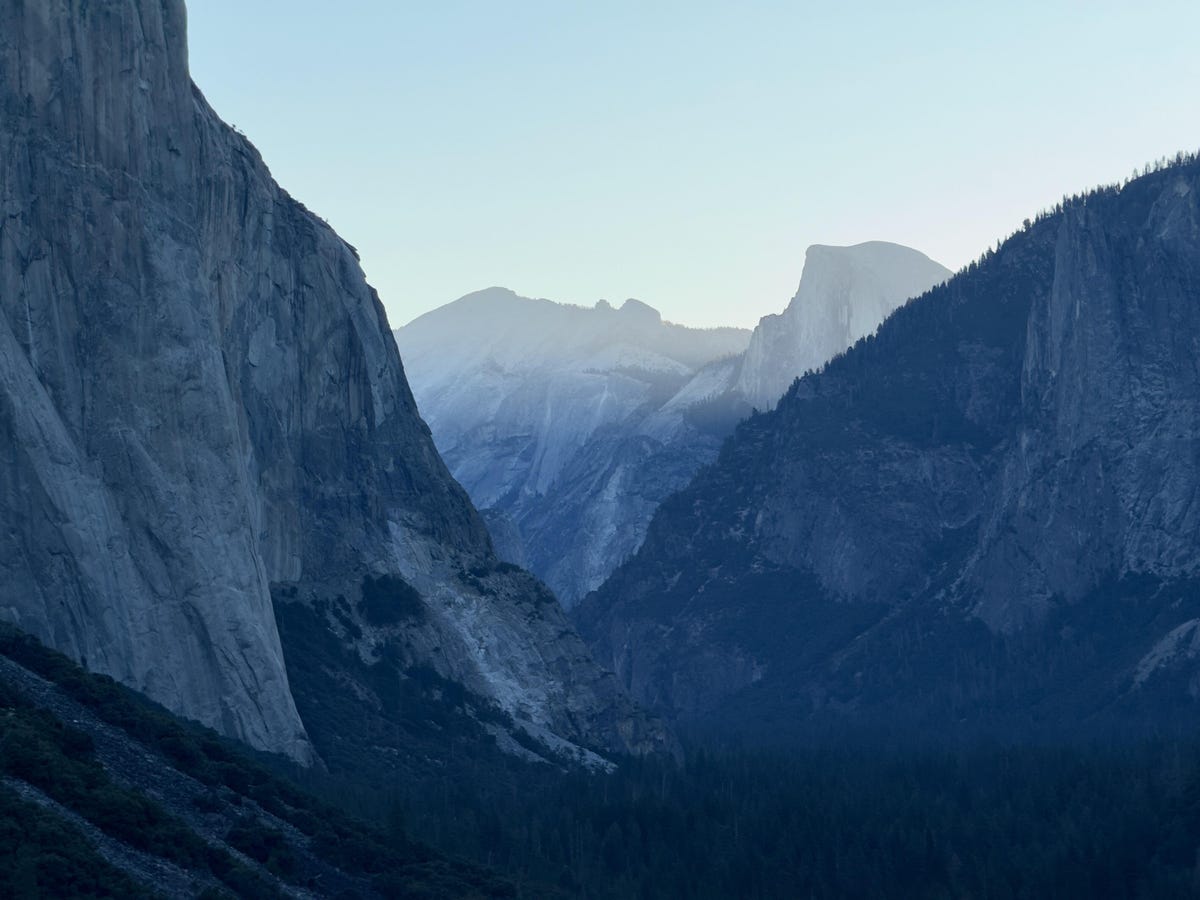
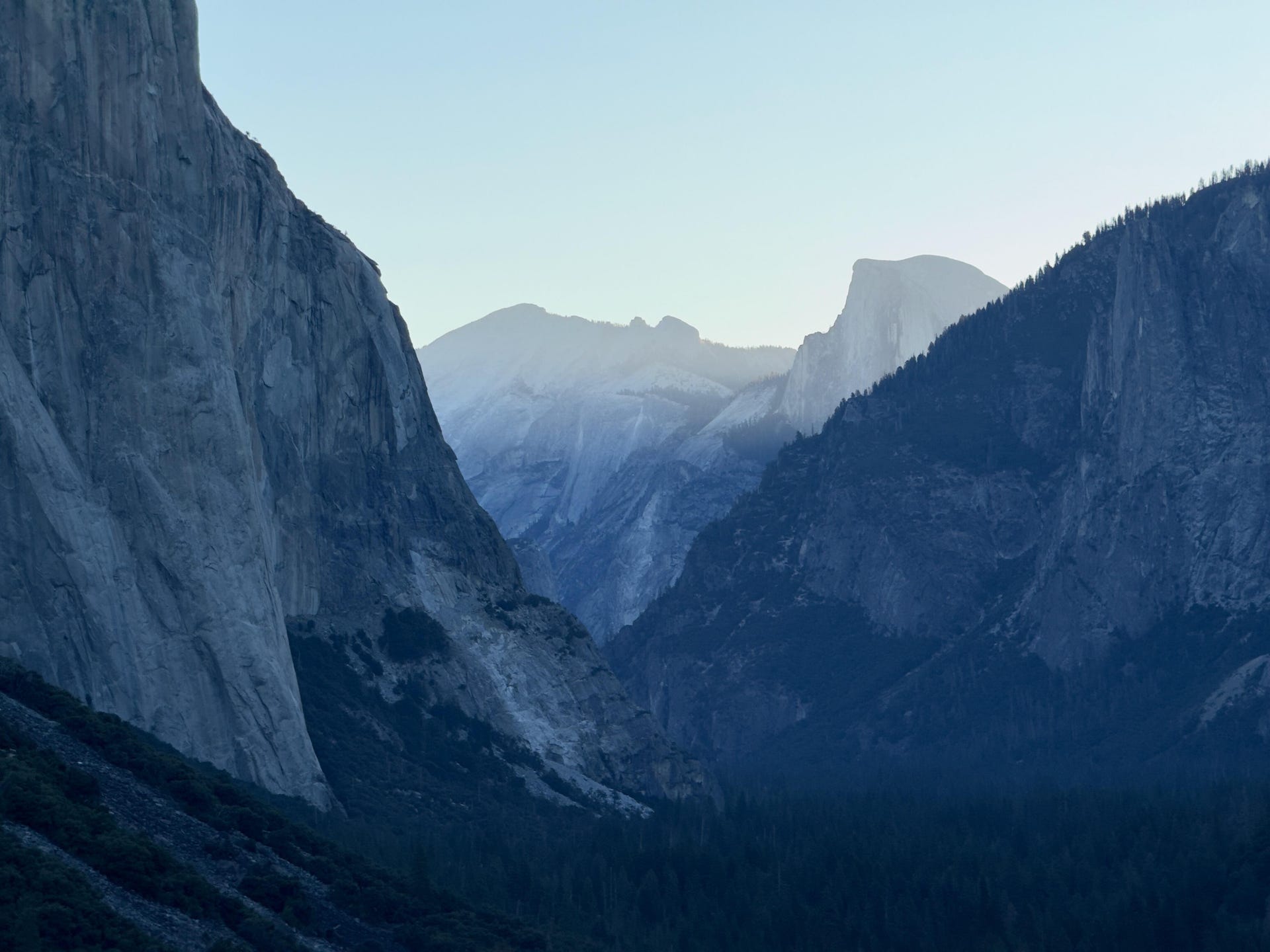
For reference, the image below was shot on the 15 Pro Max from the same location using the ultra Wide lens. I am about five miles away from that V-shaped dip at the end of the valley.
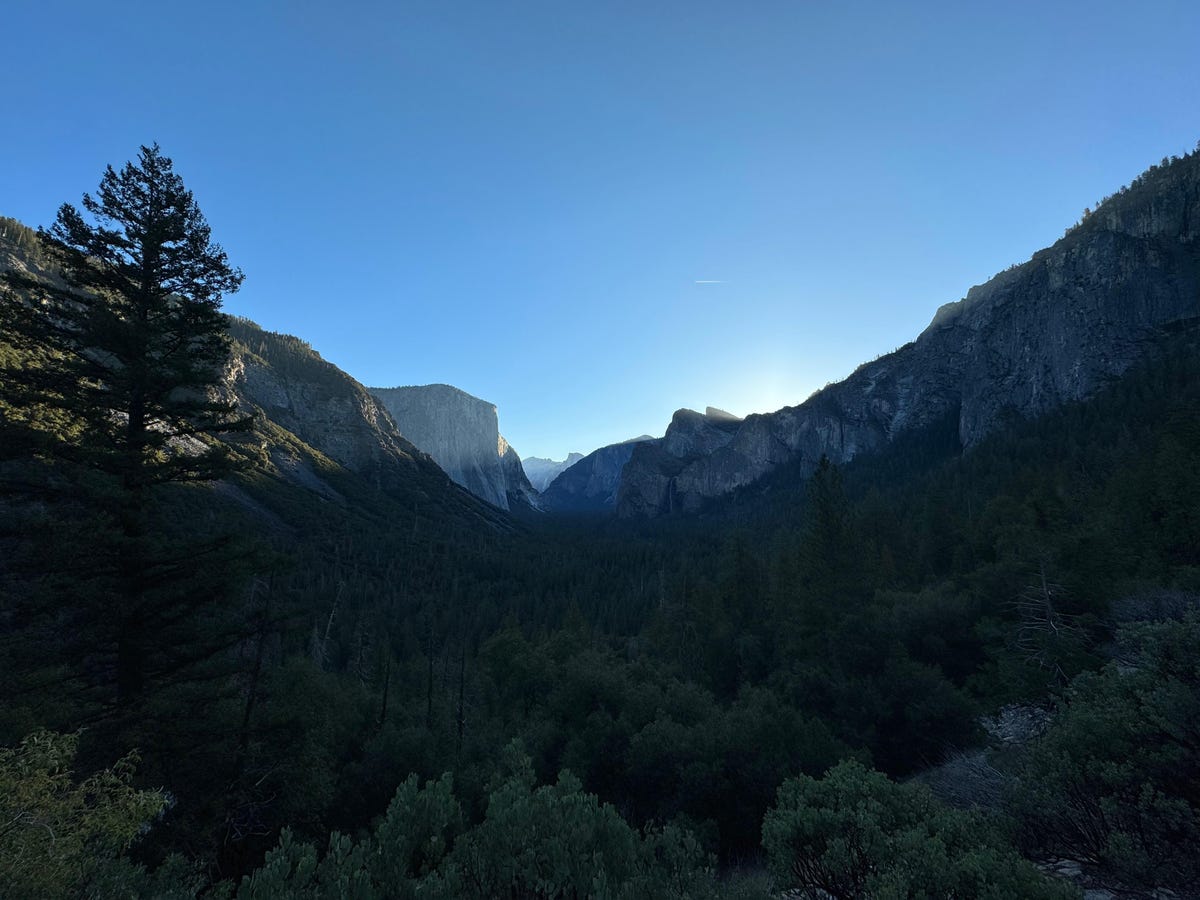
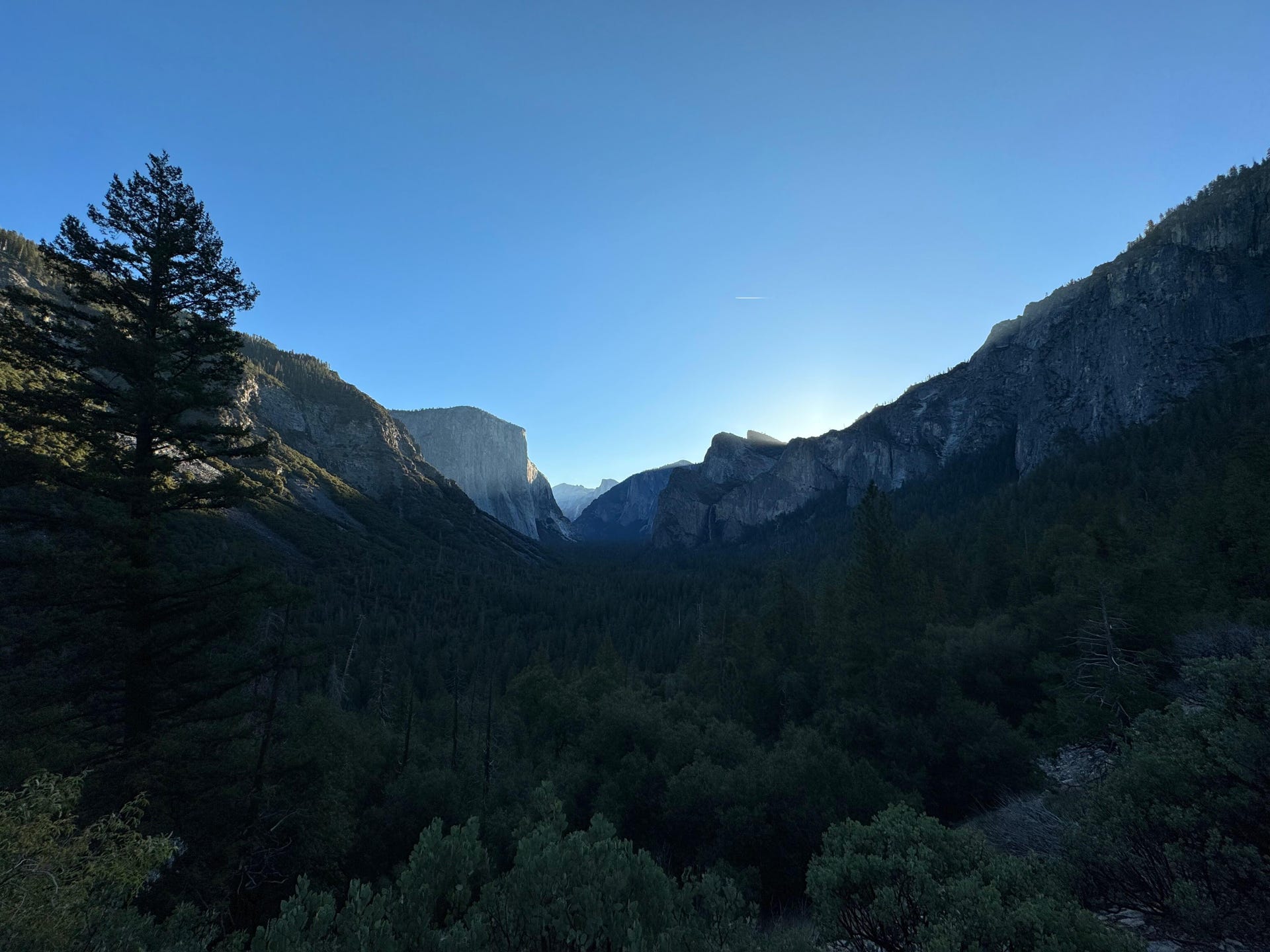
The iPhone still suffers from lens flare
Lens flares, along with the green dot that seems to be in all iPhone images taken into direct sunlight, continue to be an issue on the iPhone 15 Pro Max despite the new lens coatings.
Apple says the main camera lens has been treated for anti-glare, but I didn’t notice any improvements. In some cases, images have even greater lens flares than photos from previous iPhone models.
Notice the repeated halo effect surrounding the sun on the images below shot at Lower Yosemite Falls.
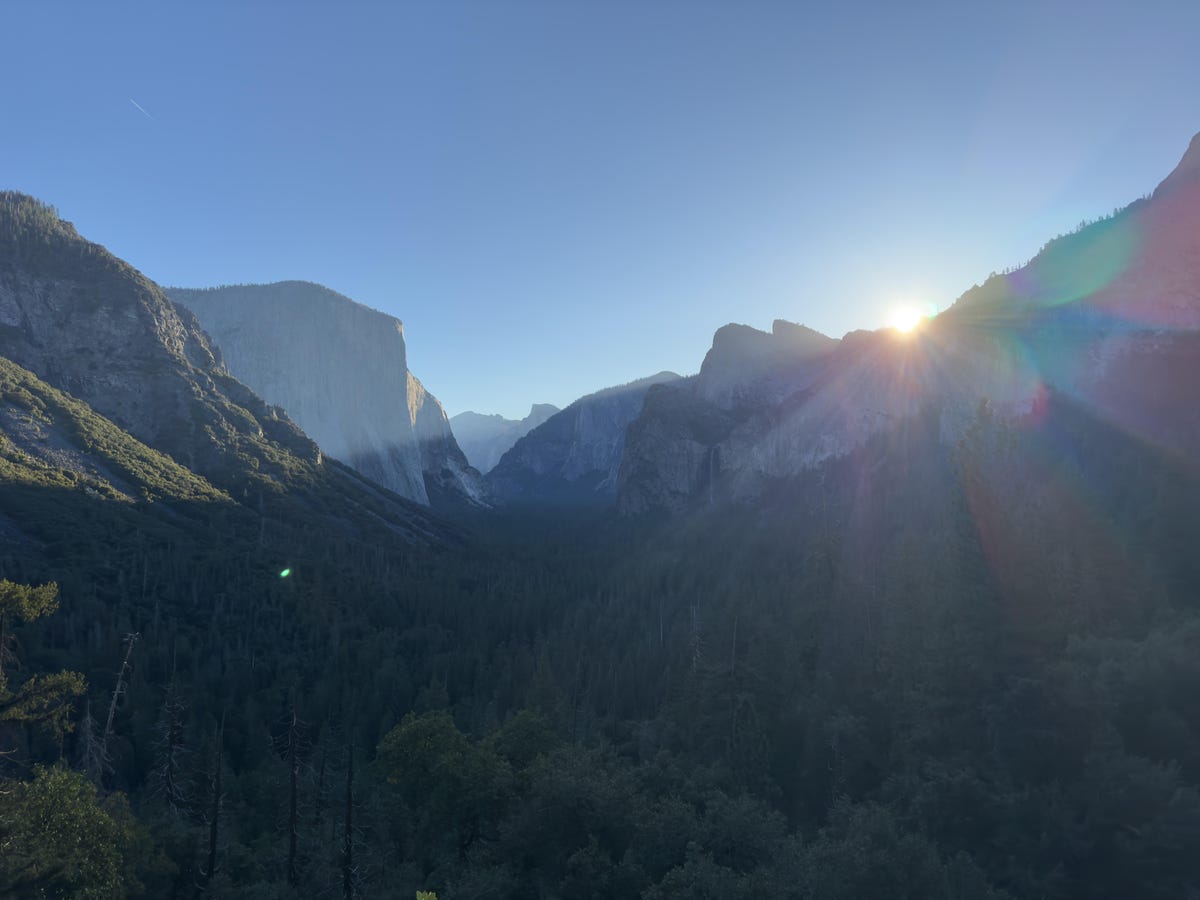
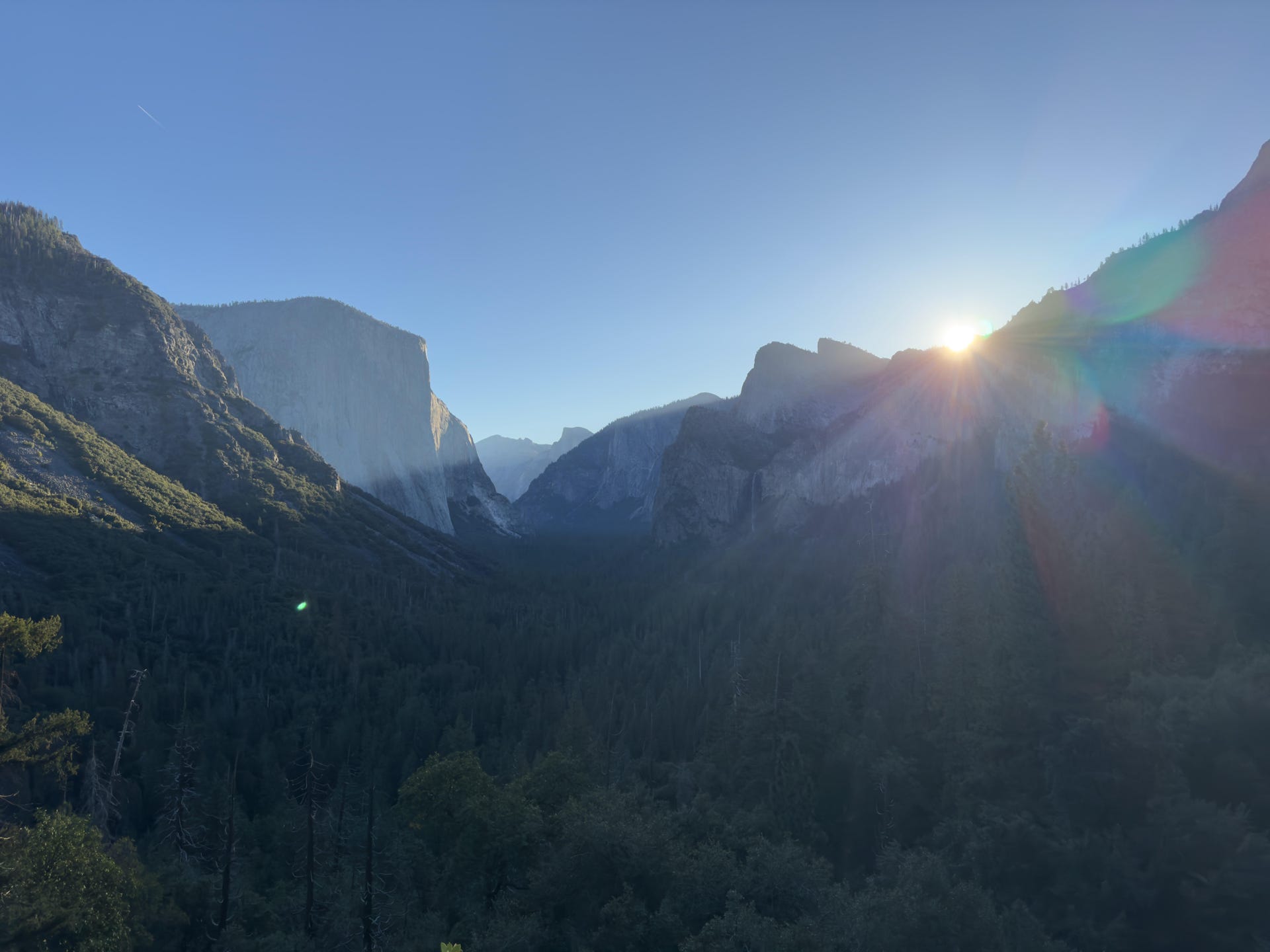
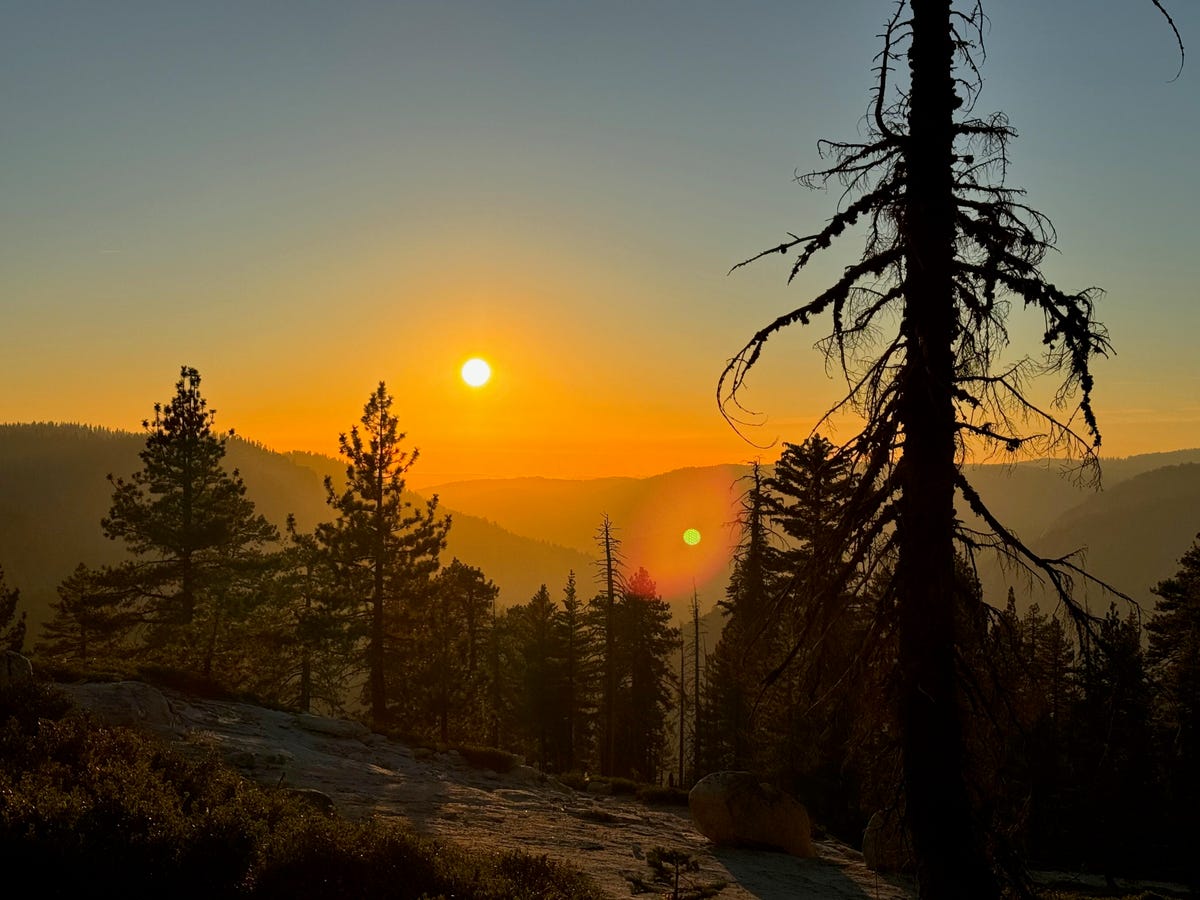
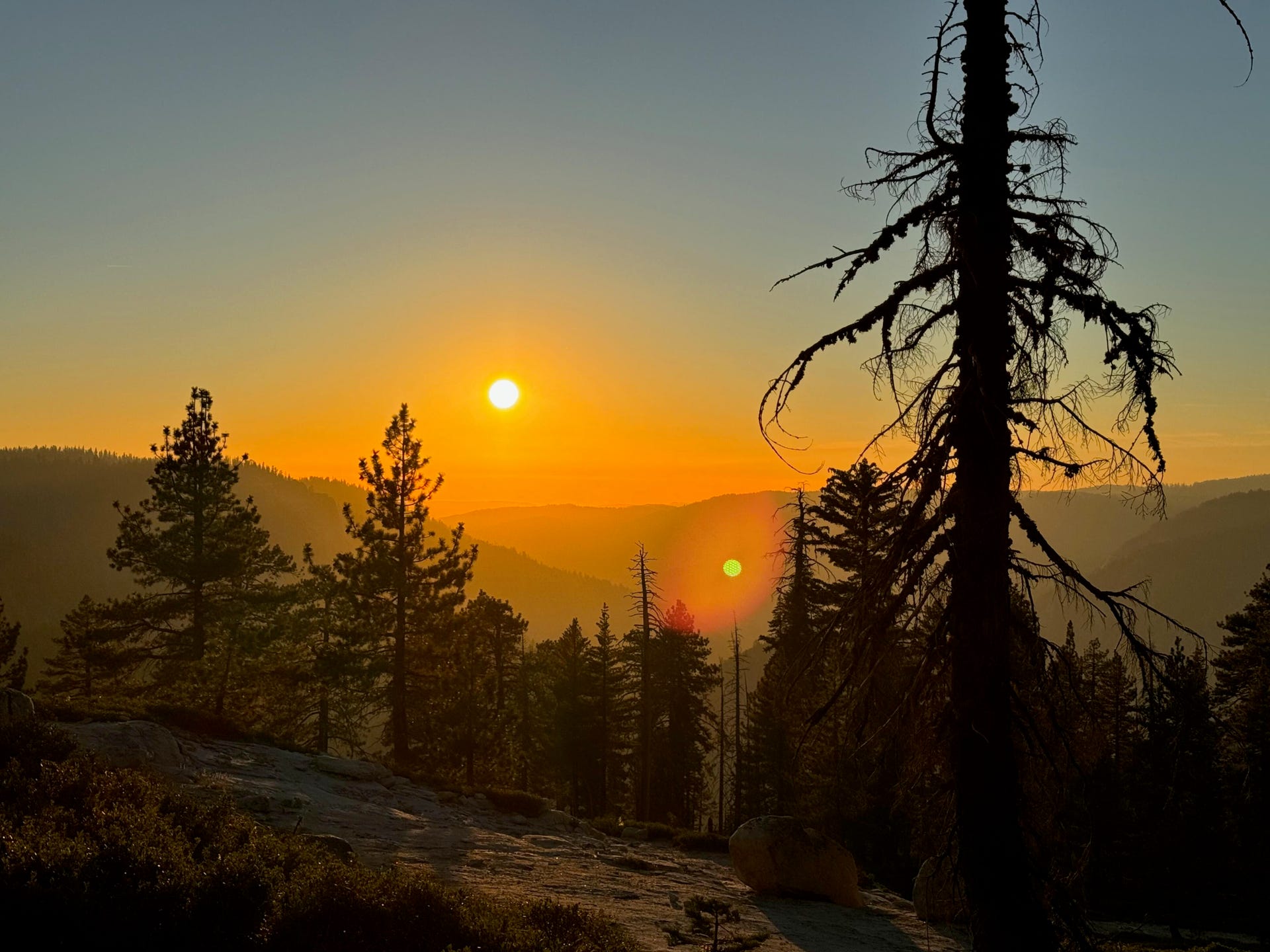
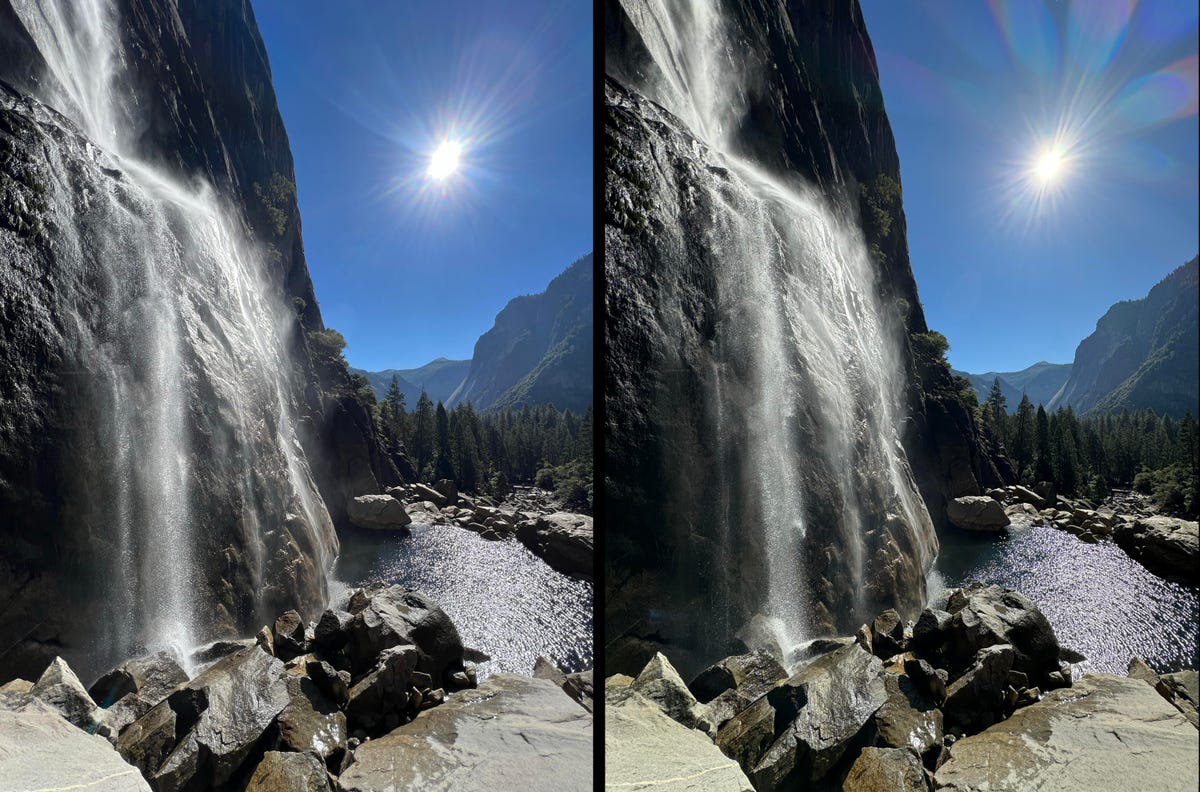
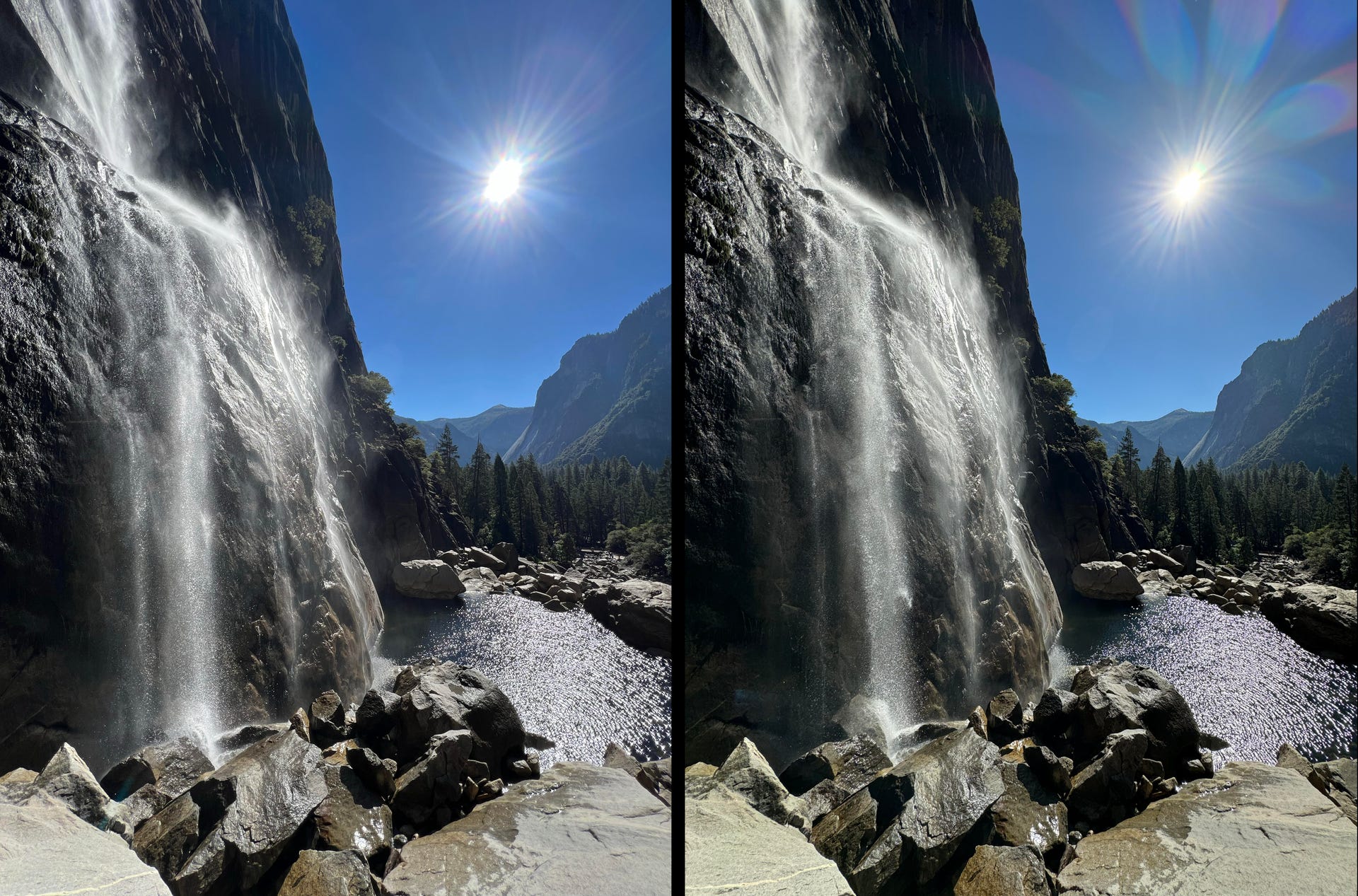
The 15 Pro Max and Smart HDR 5
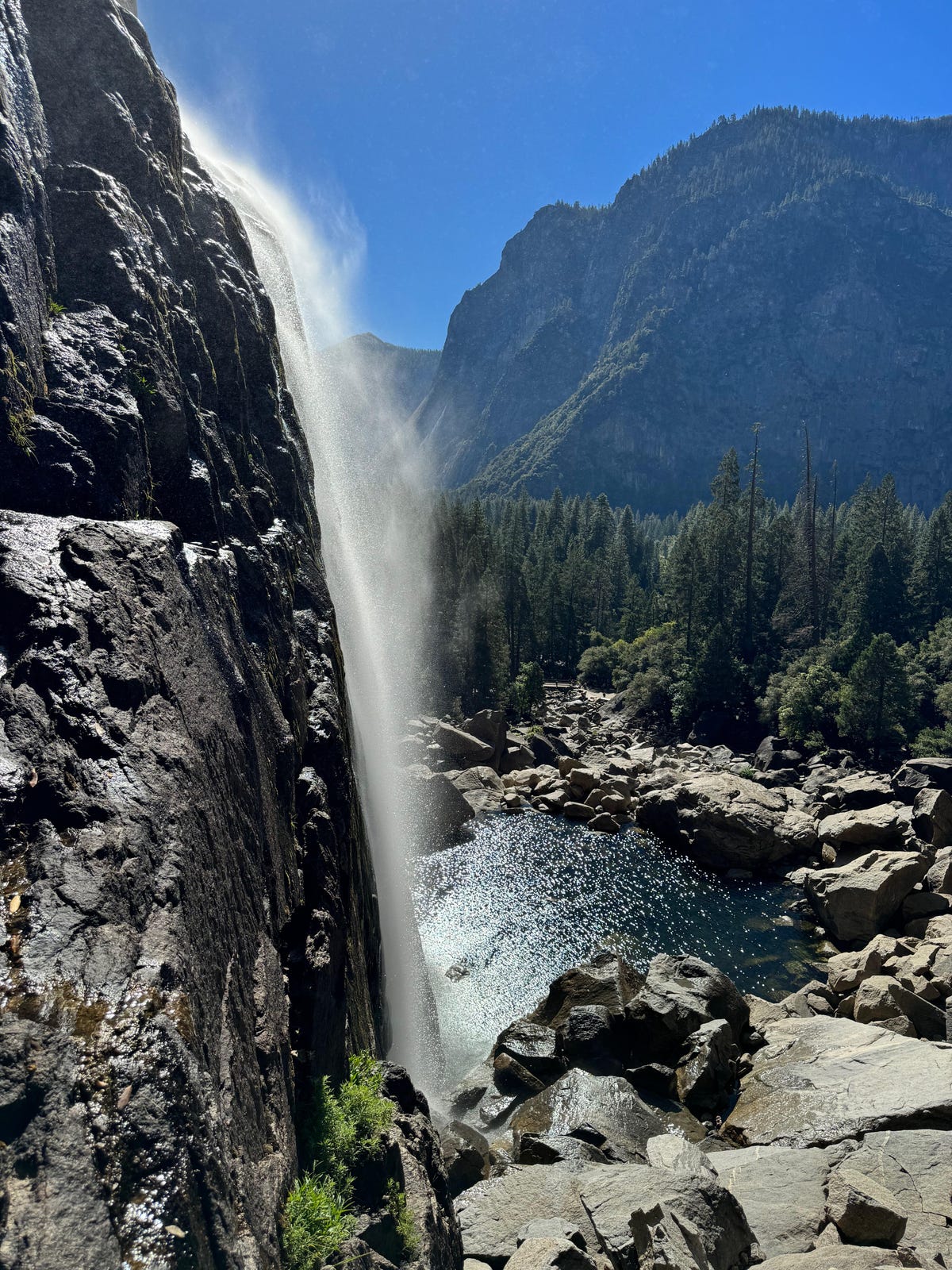
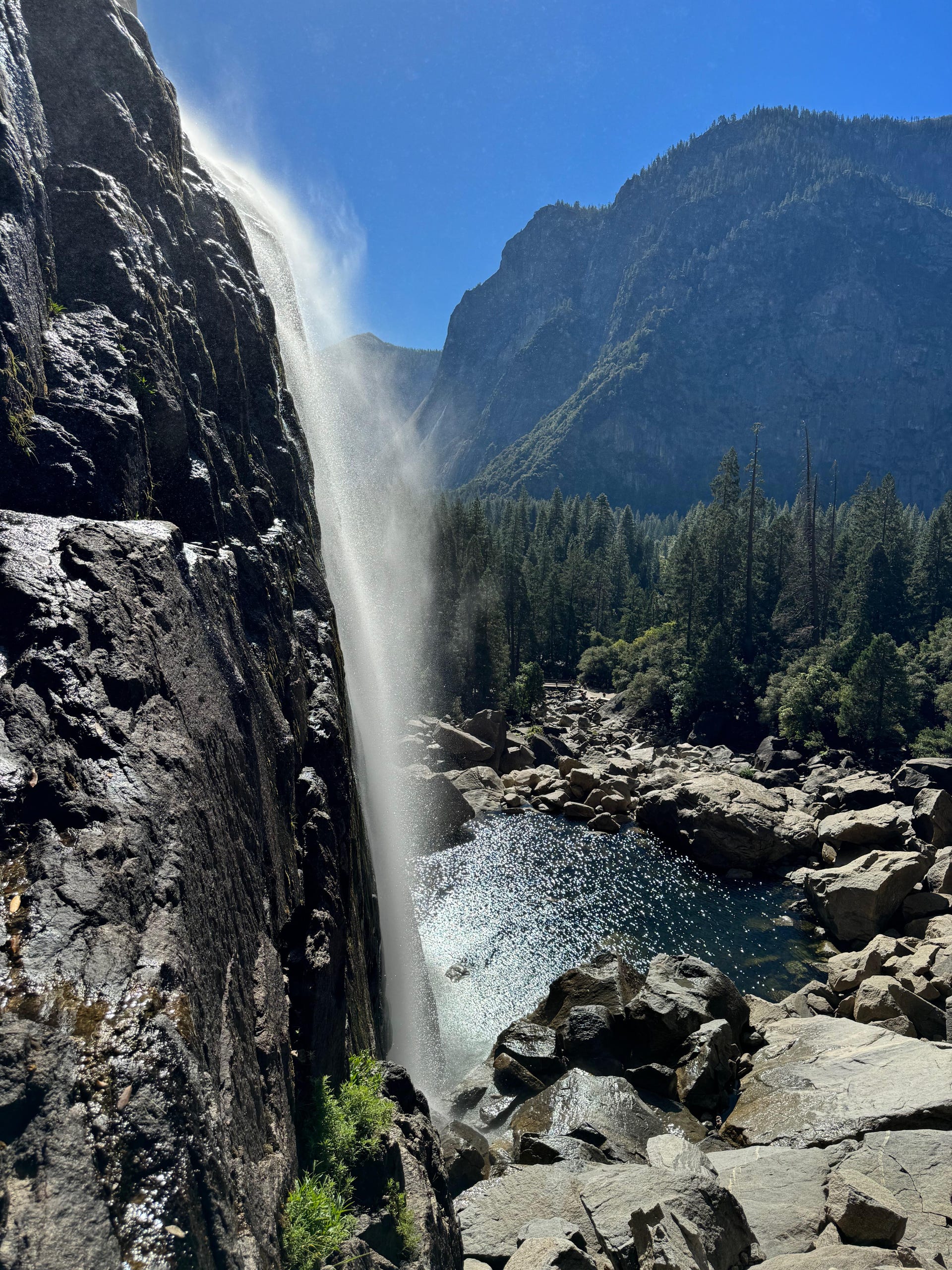
The 15 Pro Max’s new A17 Pro chip brings with it greater computational power (Apple calls it Smart HDR 5), which delivers more natural looking images compared with the 13 Pro, especially in very bright and very dark scenes. There is a noticeably better, more subtle handling of color with a less heavy-handed approach that balances between brightening the shadows and darkening highlights.
You can see clearly the warmer, more natural looking light in 15 Pro Max photo below, pushing back against the typical blue light rendering that is common in over-processed HDR images. At the same time, Apple’s implementation hasn’t swayed too far in the opposite direction and refrains from over saturating orange colors that frequently troubles digital corrections on phones.

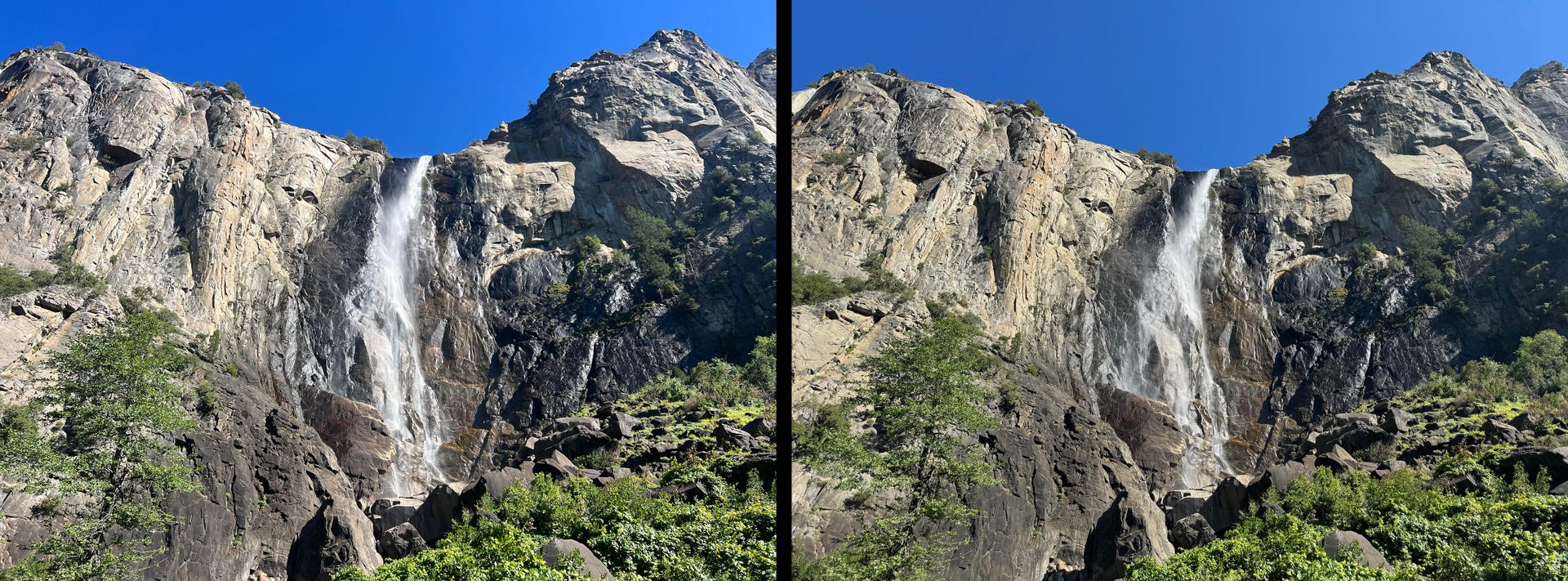
Coming from an iPhone 13 Pro Max, I noticed the background corrections during computational processing on the 15 Pro Max tend to result in more discrete and balanced images. Apple appears to have dialed back its bombastic pursuit of pushing computational photography right in our faces like with the 13 Pro and fine tuned the 15 Pro Max’s image pipeline to lean toward a more realistic reflection of your subject.
It’s a welcome change.
The 15 Pro Max shines in night mode
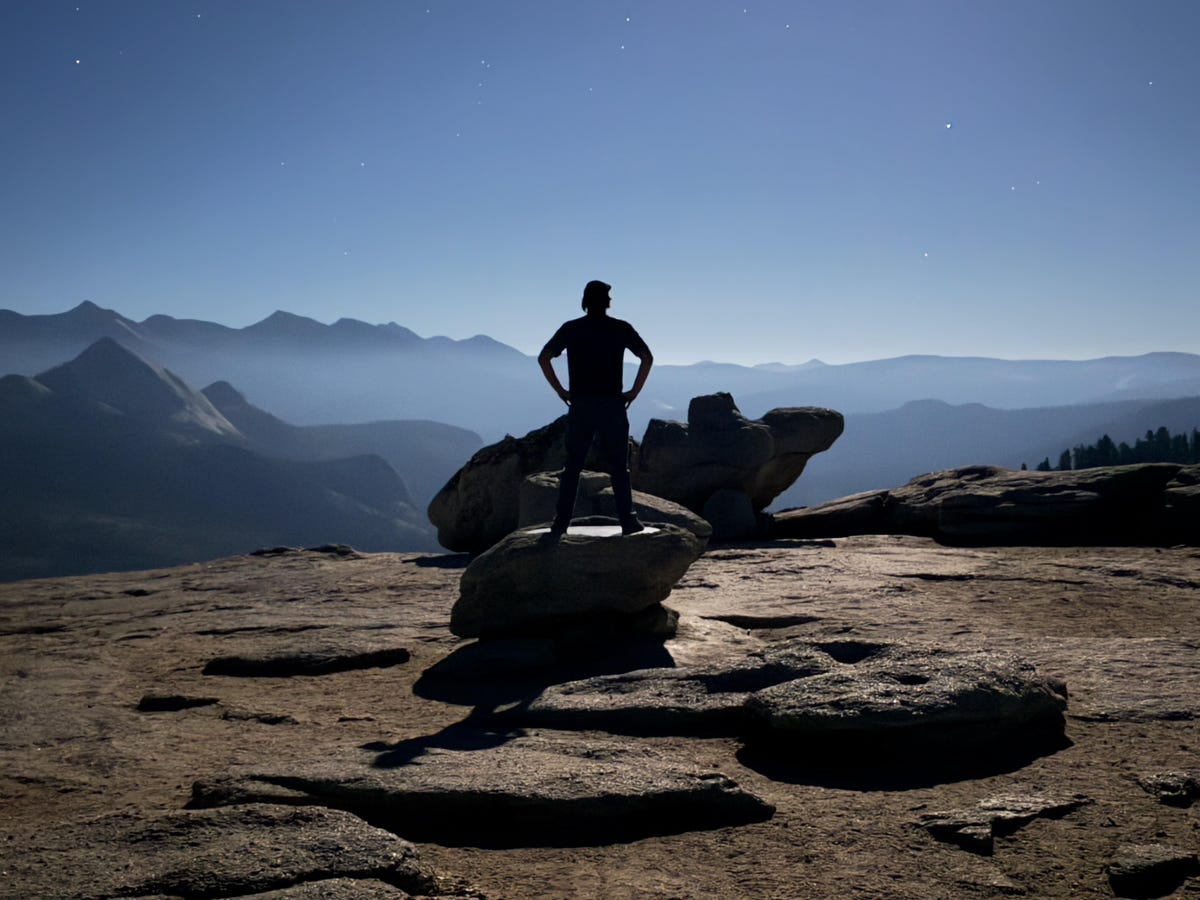
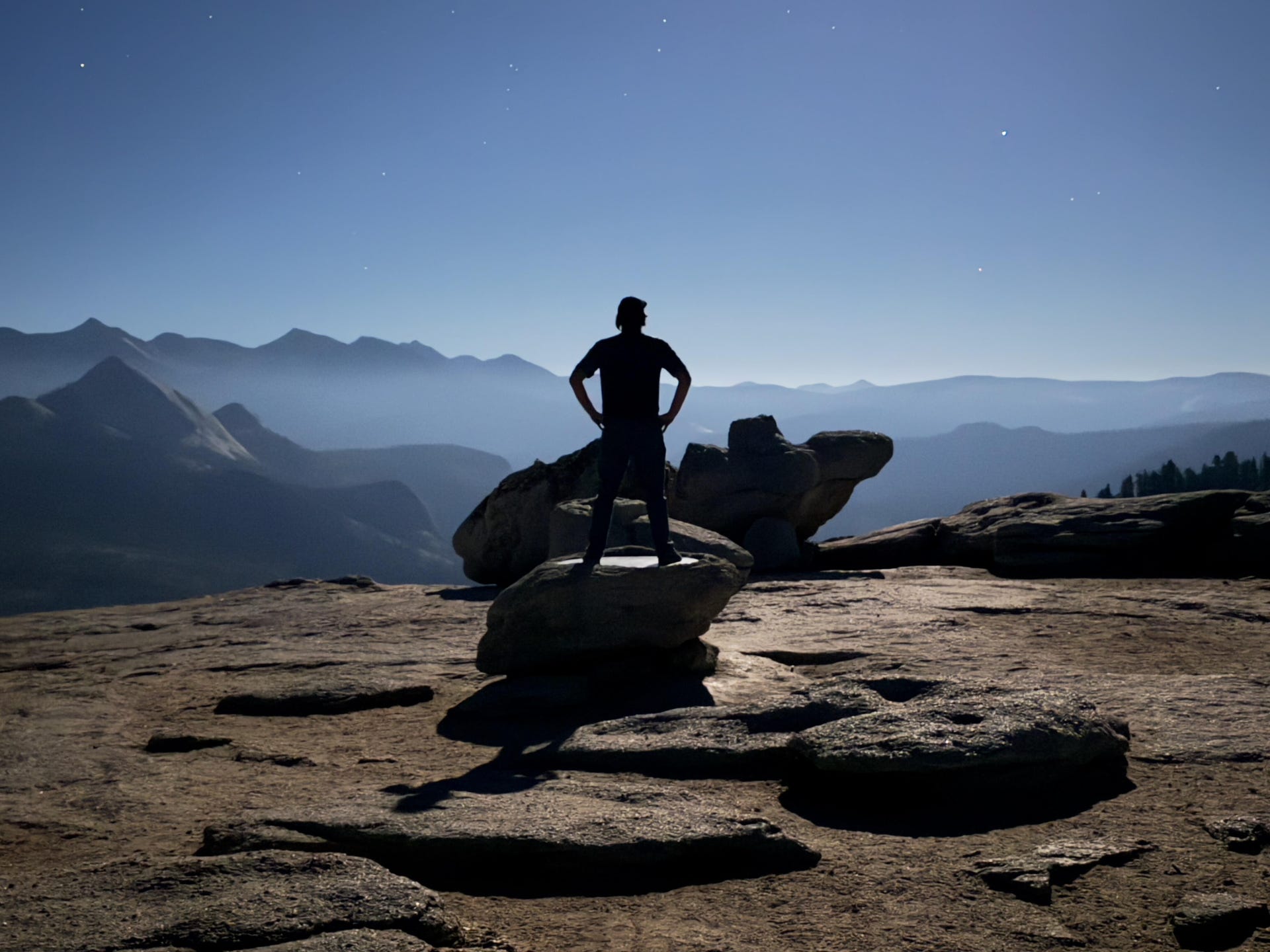
Night mode shots from the 15 Pro Max look similar to the ones from my 13 Pro Max, but there are minor improvements in the exposure that result in images with a better tonal range. The 15 Pro Max’s larger main camera sensor captures photos with less noise in the blacks and a better overall exposure compared to the 13 Pro Max.
Colors in 15 Pro Max night mode images appear more accurate, realistic, and have a wider dynamic range. Notice the detail in the photo below of El Capitan and The Dawn Wall. The 15 Pro Max even captures detail in the car lights snaking through the valley floor road.
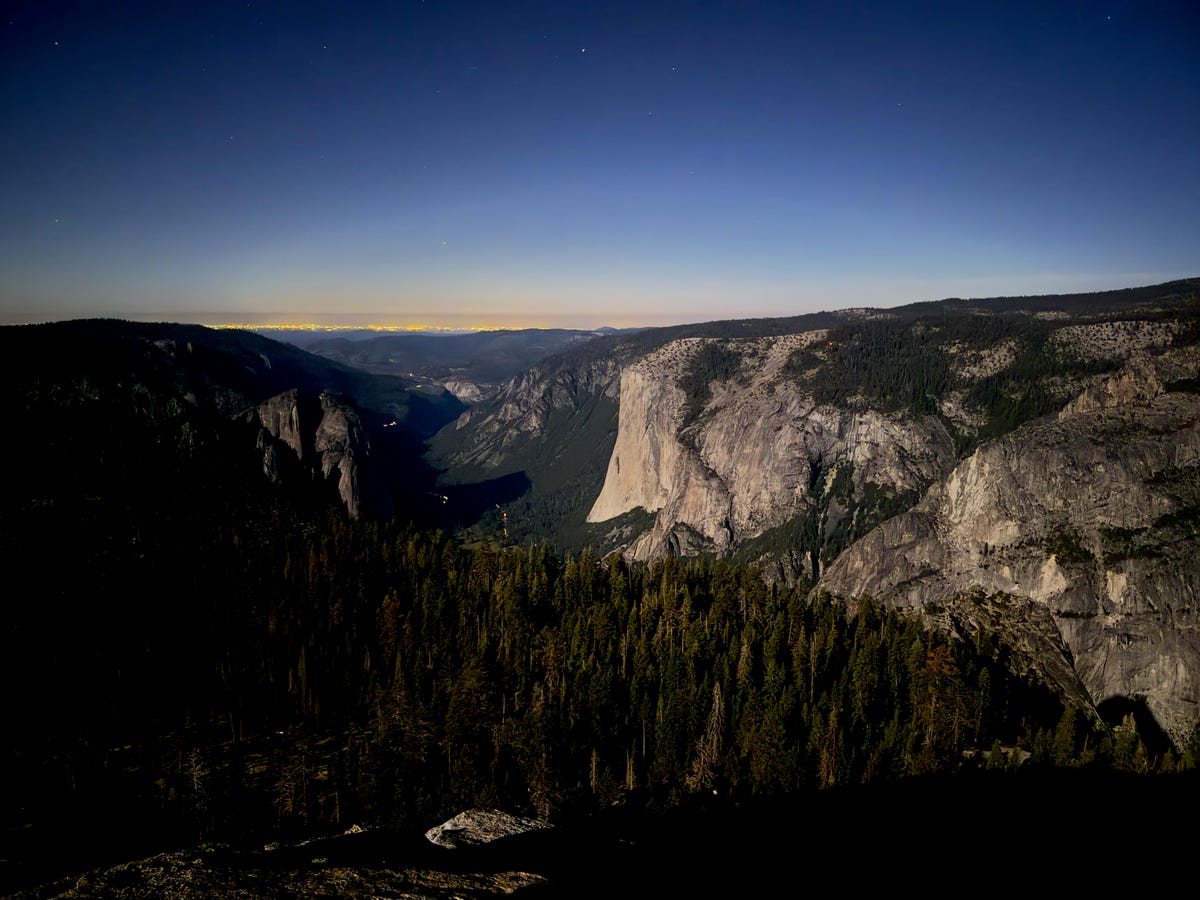
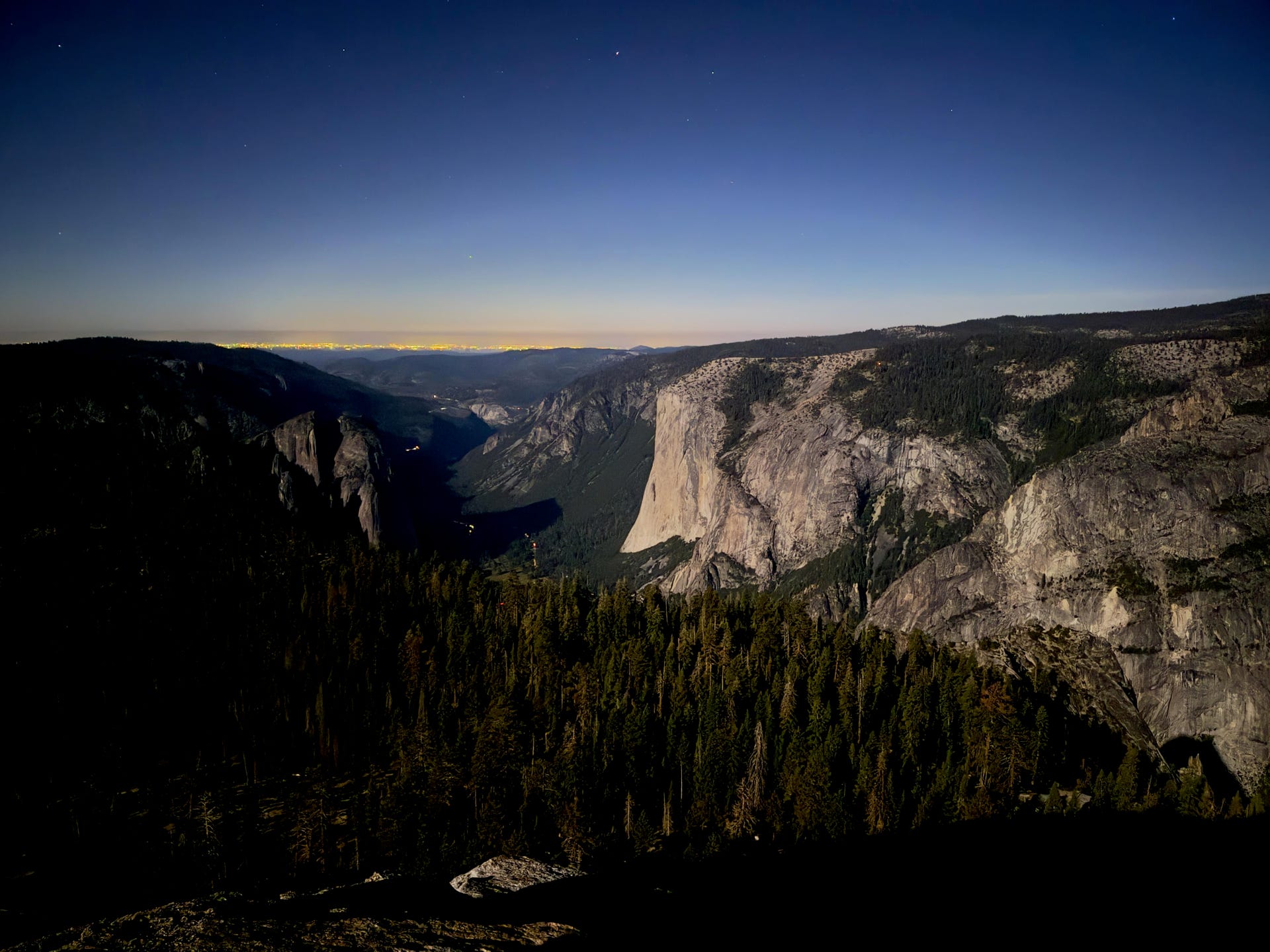
Overall, night mode images continue to look soft and over-processed. Night mode gives snaps a dream-like vibe and that isn’t necessarily a bad thing. These photos are brighter and have less image noise than those shot on my iPhone 13 Pro Max.
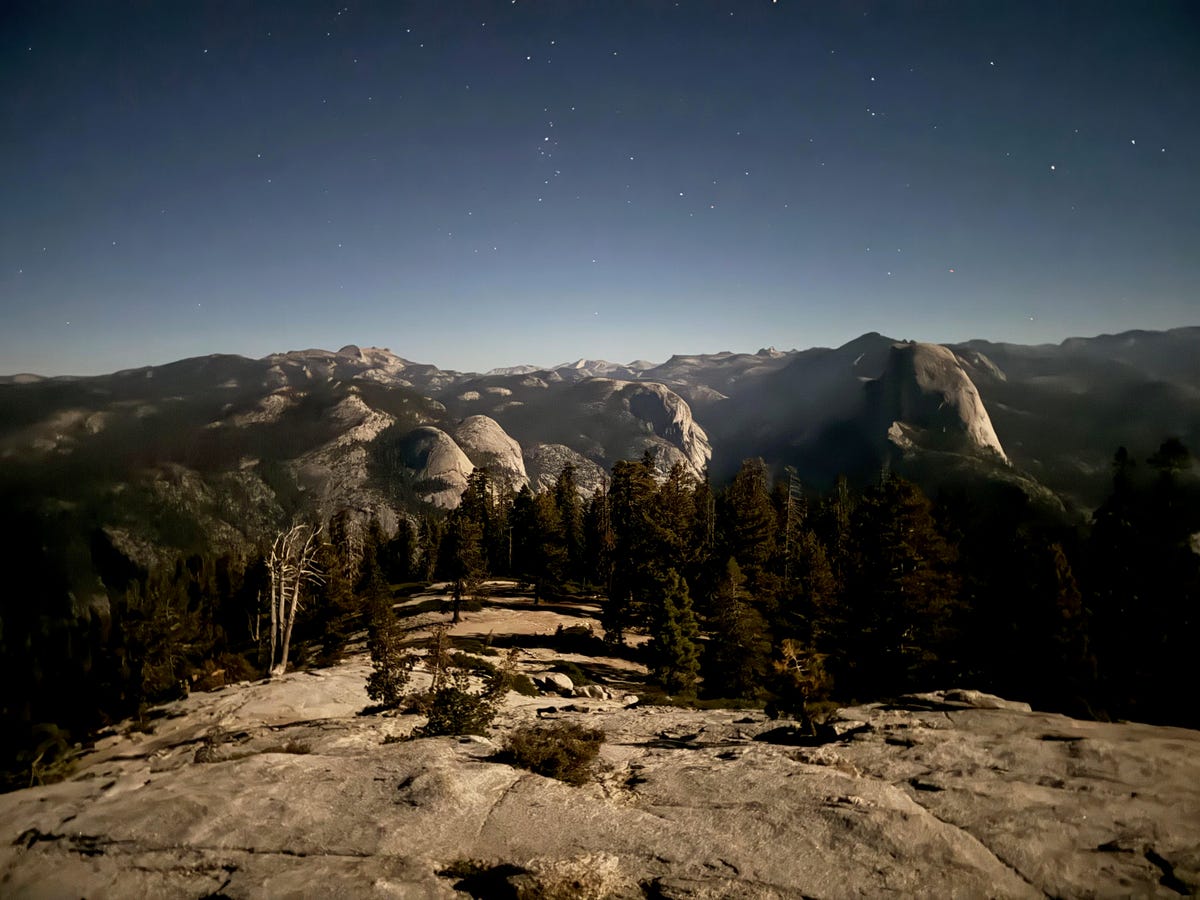
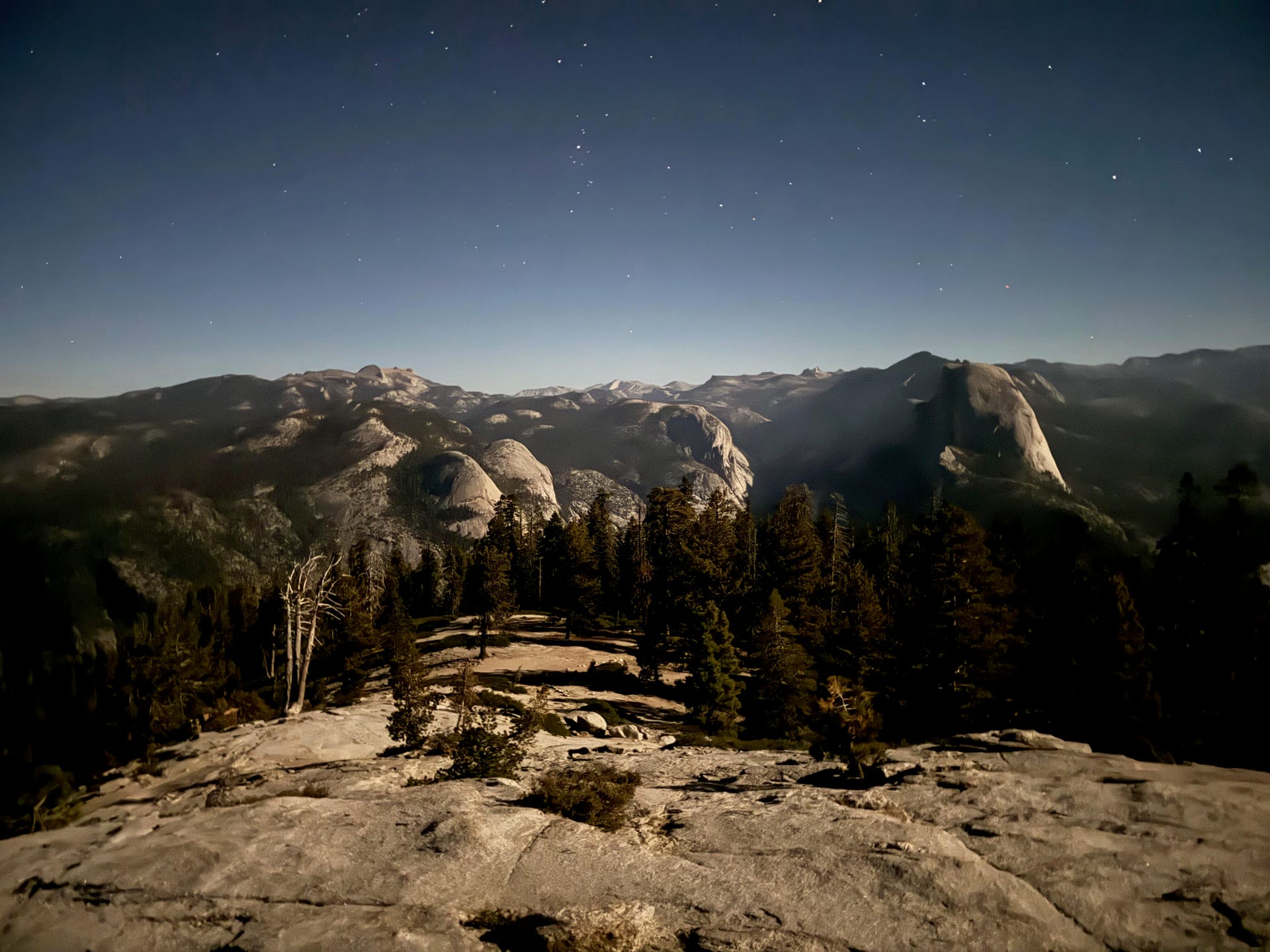
15 Pro Max vs. 13 Pro Max: the bottom line
By this point, it should be no surprise that the iPhone 15 Pro Max’s cameras are a significant improvement over the ones on the 13 Pro Max. If photography is a priority for you, I recommend upgrading to it from the 13 Pro Max or earlier.
If you’re coming from an iPhone 14 Pro, the improvements seem less dramatic, and it’s likely not a worth the upgrade. I’m incredibly excited to continue carrying the iPhone 15 Pro Max in my pocket to Yosemite or just around my home.
Technologies
Honor’s Shimmering Magic V Flip 2 Has Arrived to Outshine Samsung’s Galaxy Flip
The flip foldable, releasing in China, includes a limited edition model co-designed by Jimmy Choo.
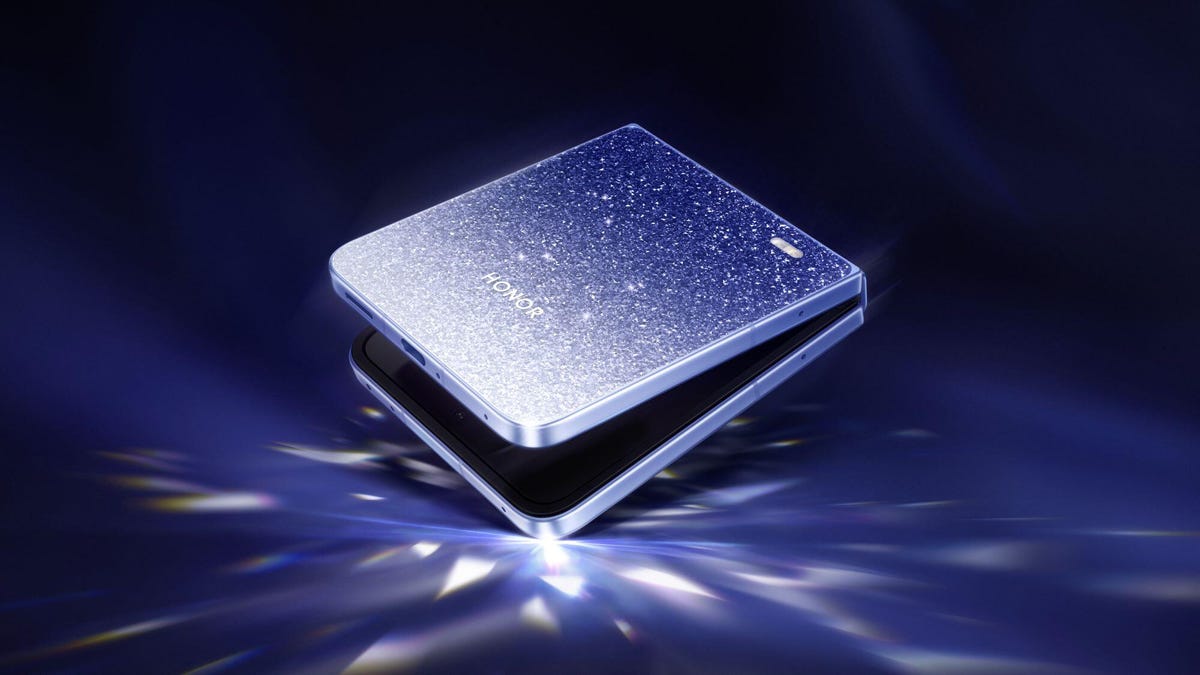
Honor has unveiled a new flip phone in China, and the company is billing it as, «the ultimate selfie device.» The Magic V Flip 2 includes an ultra-wide portrait mode, AI photography features and a playful, sparkly design.
The Magic V Flip 2 adds another device to Honor’s increasing lineup of foldable phones. So far, it’s only releasing the Magic V Flip 2 in China, starting on Aug. 28. It will sell for RMB 5,499 or about $766 USD.
The Magic V Flip2 appears to be geared toward influencers and fashionistas — a limited edition version of the new phone is co-designed by fashion icon Jimmy Choo and is, «inspired by the subtle shimmer of crystals.» It comes in deep sea blue and has a crushed stardust design, according to Honor’s press release.
Honor is also touting the phone’s 5,500mAh battery, which it says is the largest on the market for a flip phone. The also phone features a 200-megapixel main camera, a 50-megapixel ultra-wide camera and a 50 MP selfie camera. The Magic V Flip 2’s closest competition may be Samsung’s Galaxy Flip 7 FE, which is about $200 more expensive than the Magic V Flip 2.
Technologies
Silksong, Long-Awaited Hollow Knight Spinoff, Gets Release Date: Sept. 4
Announced in 2019, Team Cherry’s follow-up is coming sooner than expected, and it’s on Game Pass on Day 1.

Hollow Knight: Silksong is the follow-up, announced back in 2019, to one of the most beloved indie games of the last decade. In a special announcement video on Thursday, Australian developer Team Cherry revealed that the wait is almost over.
Silksong will be released on Sept. 4, according to the new trailer. The almost two-minute video reveals some of the new enemies and bosses in the upcoming spinoff and ends with the surprise release date.
Originally, Silksong was going to be a DLC for Hollow Knight. However, numerous delays resulted in it being pushed back again and again. Glimpses of the game would show up here and there over the years, but it was this year that it received the most attention from Nintendo as part of its Switch 2 lineup, and from Microsoft, which confirmed it would be available on Xbox Game Pass.
Hollow Knight: Silksong will be available on PC, Switch, Switch 2, Xbox One, Xbox Series X and Series S, PS4 and PS5. It will be available on Day 1 for Xbox Game Pass subscribers.
Technologies
PS5 Prices Go Up Today. Here’s How Much and Why
You can expect to pay more for a new PlayStation, thanks to «a challenging economic environment.»
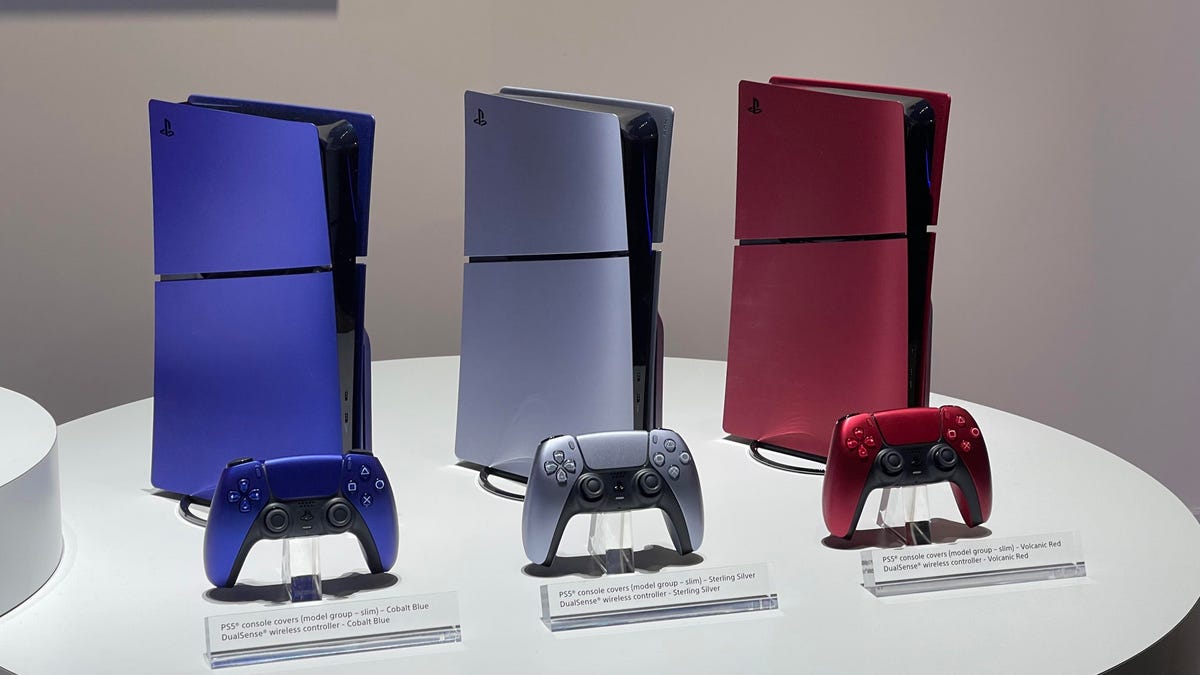
Sony will increase the prices of its PlayStation 5 consoles in the US, starting today. This follows the trend of console manufacturers such as Microsoft and Nintendo raising prices for their hardware in response to tariffs.
The PlayStation-maker posted about the price change Wednesday. The jump in price is $50 more than the current price for each model.
The new prices are:
- PlayStation 5: $500 to $550
- PlayStation 5 Digital Edition: $450 to $500
- PlayStation 5 Pro: $700 to $750
«Similar to many global businesses, we continue to navigate a challenging economic environment,» Sony said in a post about the price increase.
As of Thursday morning, retailers and Sony’s online store have yet to update the console prices. This jump in price also will likely affect recently released PS5 bundles such as the Astro Bot bundle and Fortnite Cobal bundle.
Sony says accessories have not been affected by the change and this cost hike only affects the US.
In May, Microsoft increased the price of the Xbox Series consoles and Nintendo hiked the original Switch console price and Switch 2 accessories this month.
While the companies didn’t point to the tariffs instituted by President Donald Trump as the reason for the hardware price jump, it would explain the trend in recent months.
-

 Technologies3 года ago
Technologies3 года agoTech Companies Need to Be Held Accountable for Security, Experts Say
-

 Technologies2 года ago
Technologies2 года agoBest Handheld Game Console in 2023
-

 Technologies2 года ago
Technologies2 года agoTighten Up Your VR Game With the Best Head Straps for Quest 2
-

 Technologies4 года ago
Technologies4 года agoVerum, Wickr and Threema: next generation secured messengers
-

 Technologies4 года ago
Technologies4 года agoGoogle to require vaccinations as Silicon Valley rethinks return-to-office policies
-

 Technologies4 года ago
Technologies4 года agoBlack Friday 2021: The best deals on TVs, headphones, kitchenware, and more
-

 Technologies4 года ago
Technologies4 года agoOlivia Harlan Dekker for Verum Messenger
-

 Technologies4 года ago
Technologies4 года agoiPhone 13 event: How to watch Apple’s big announcement tomorrow



